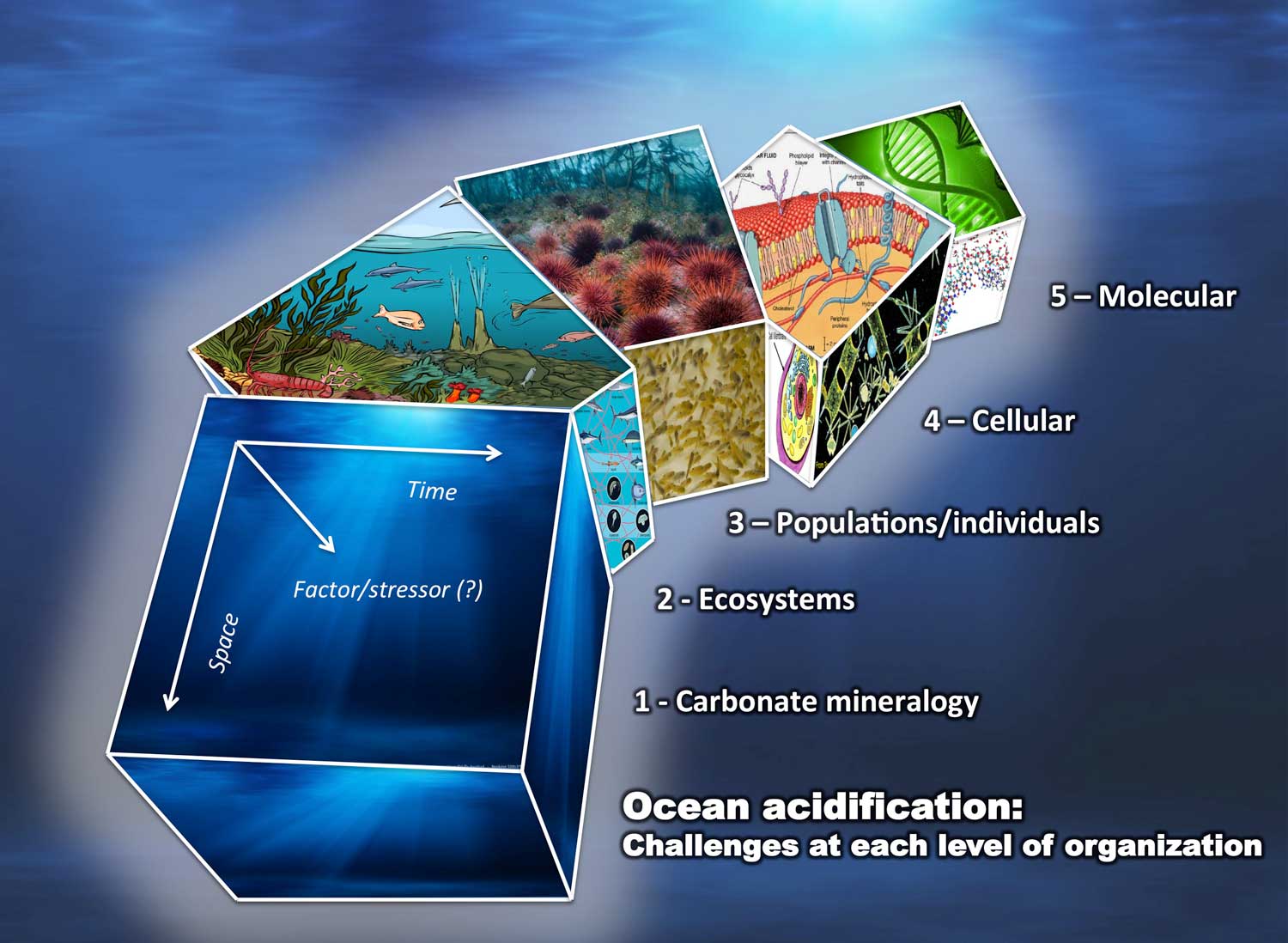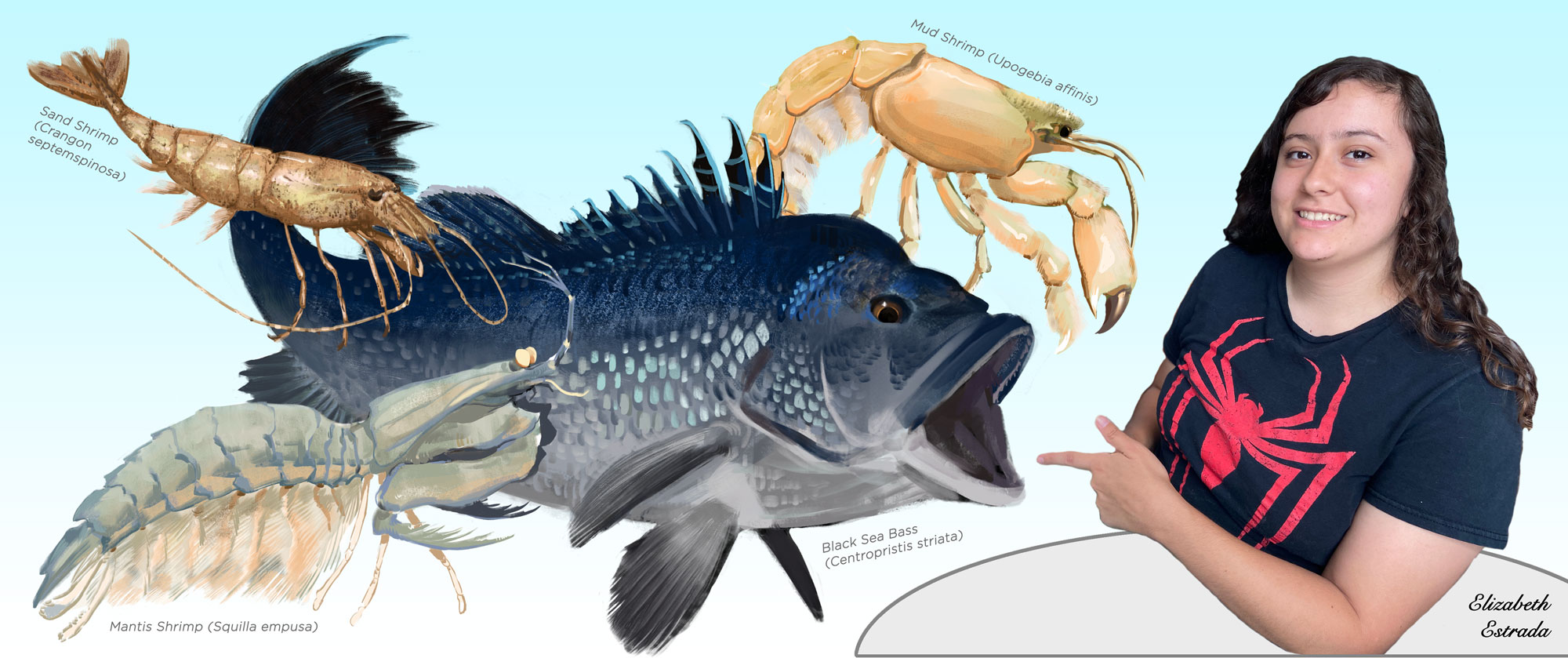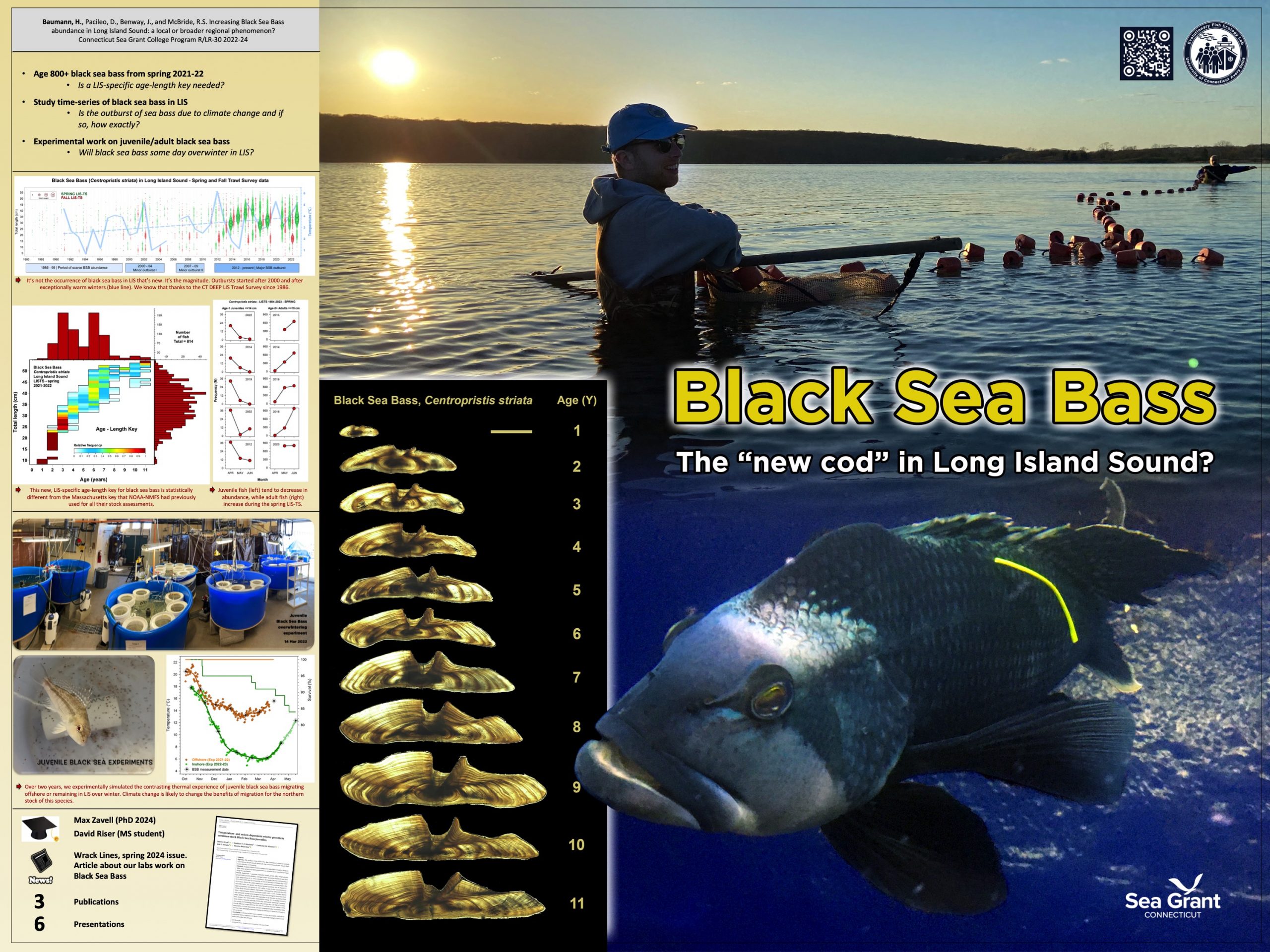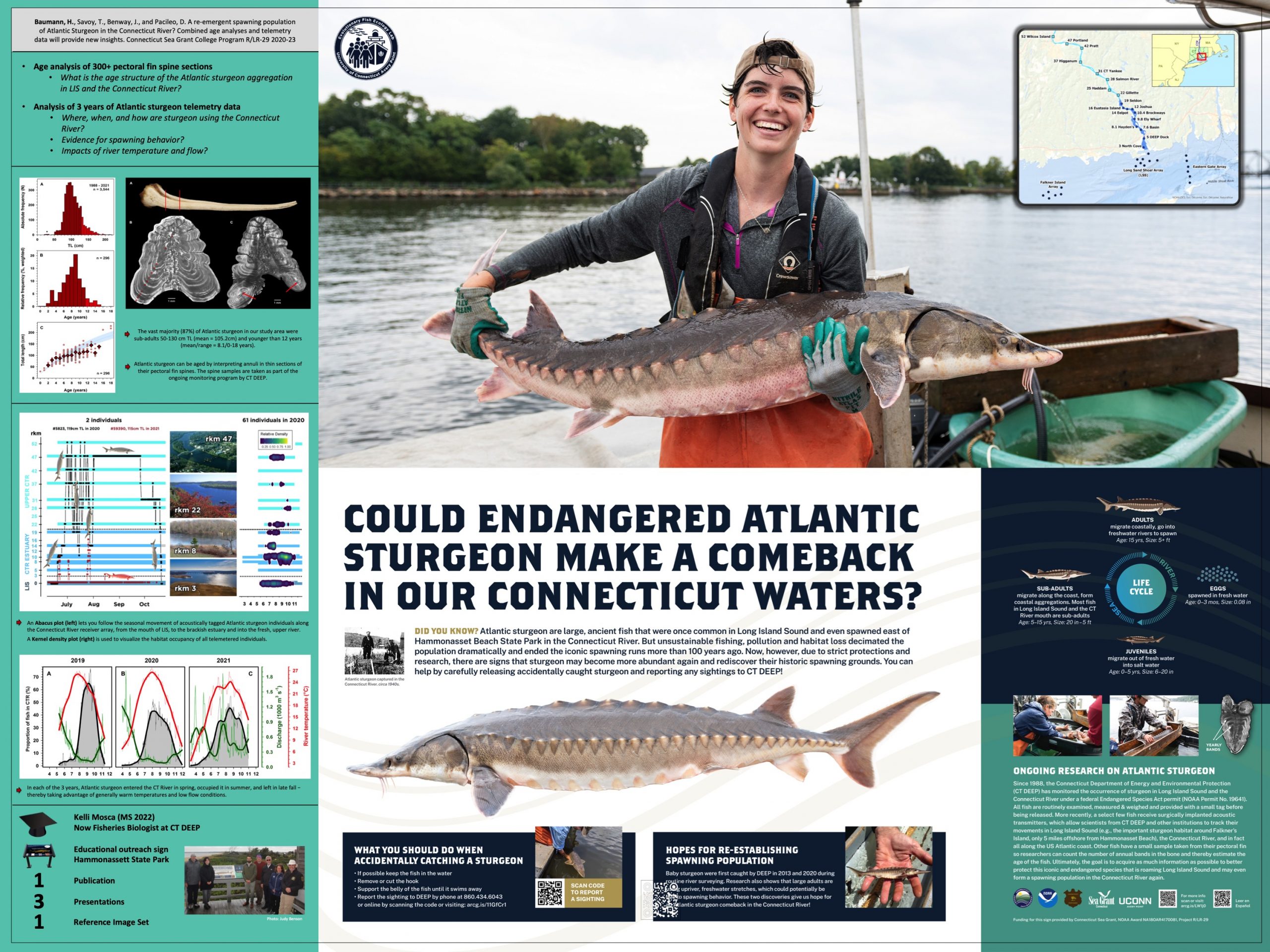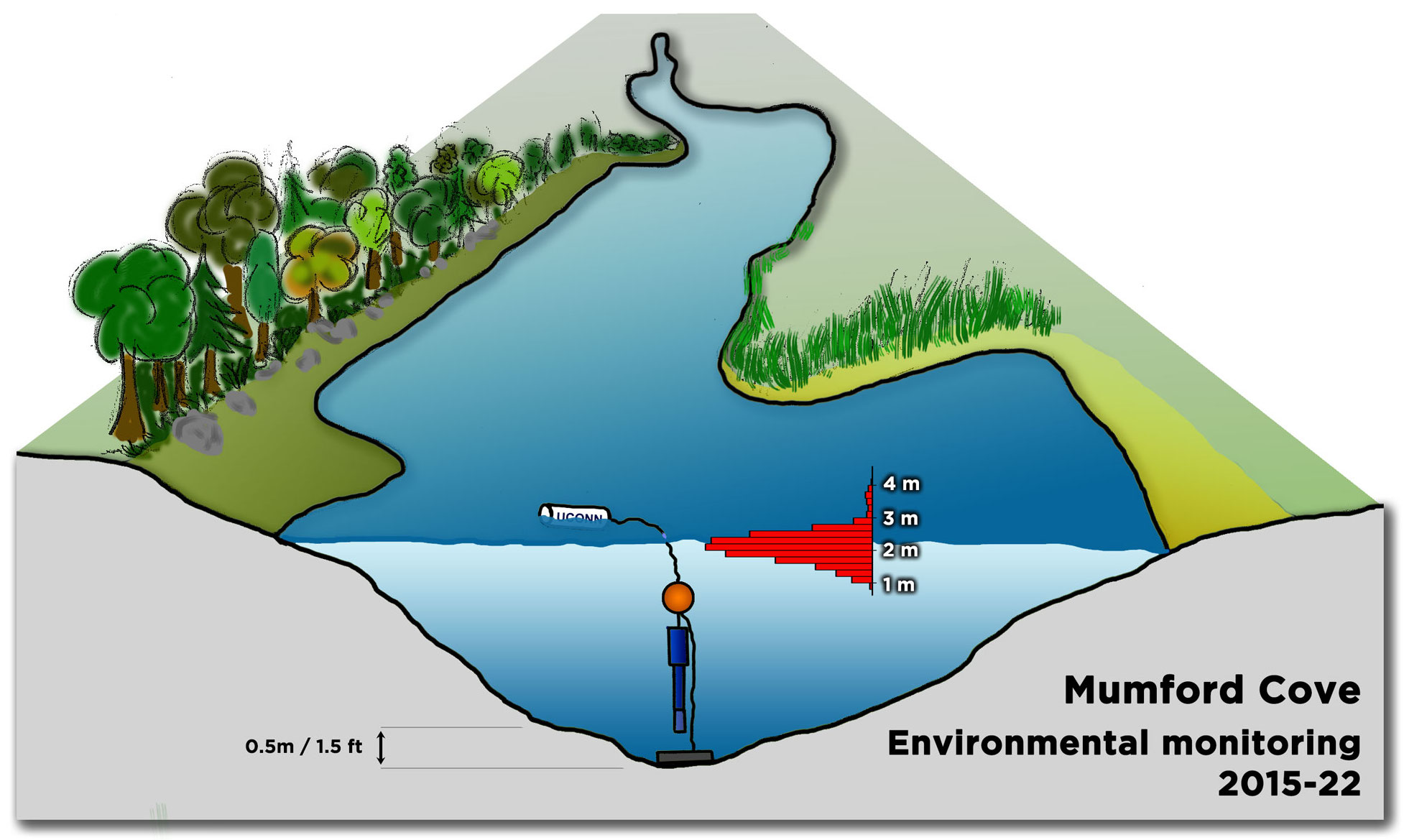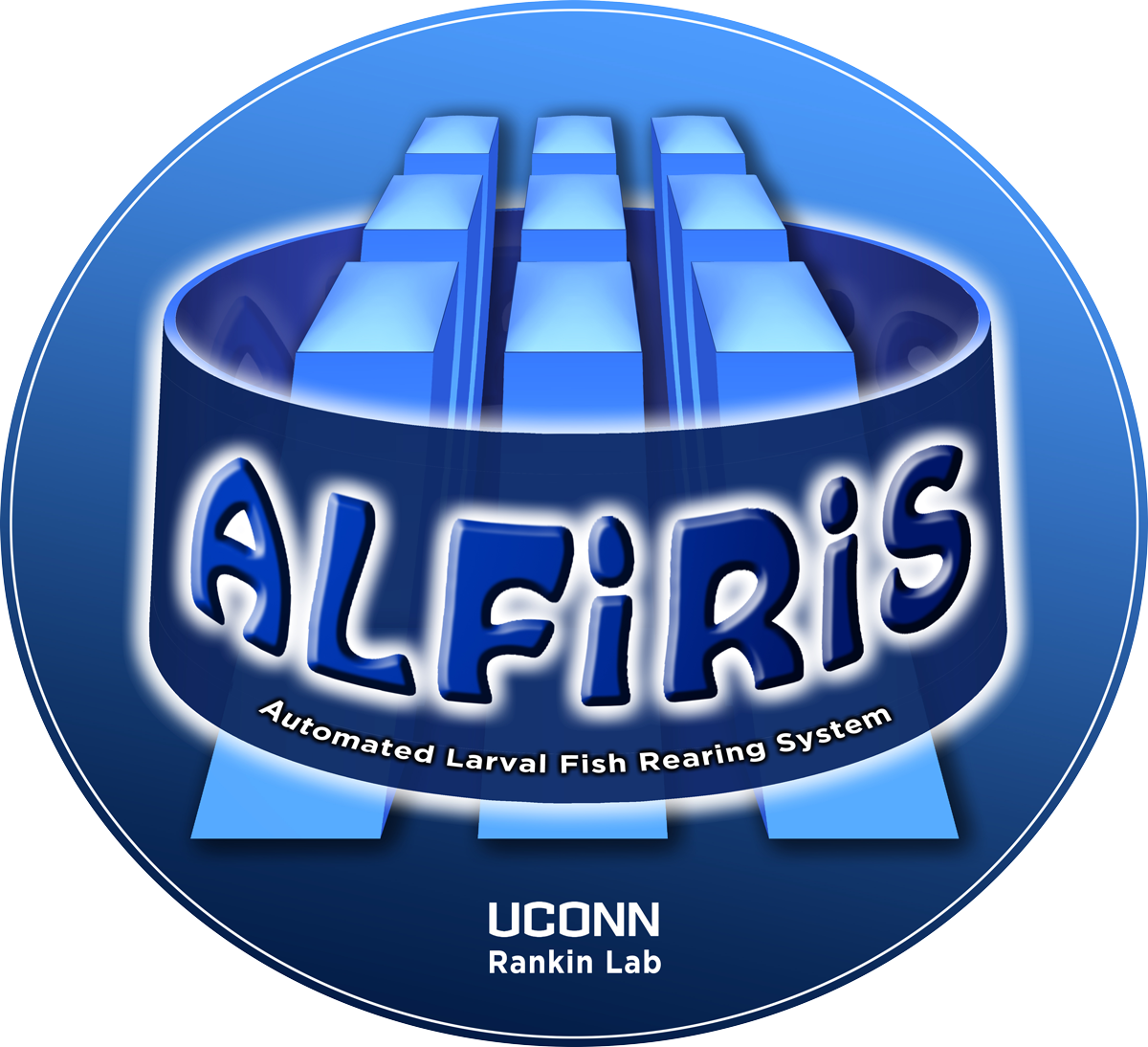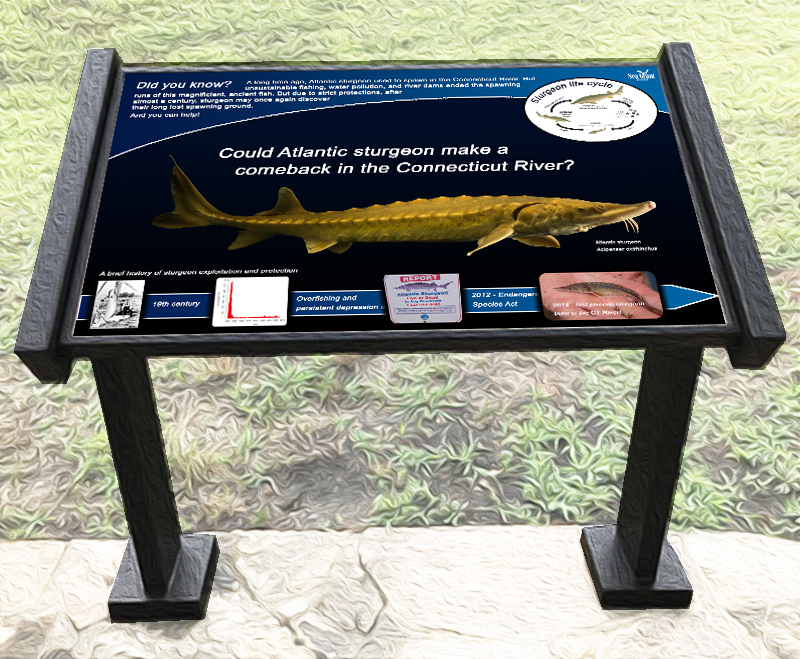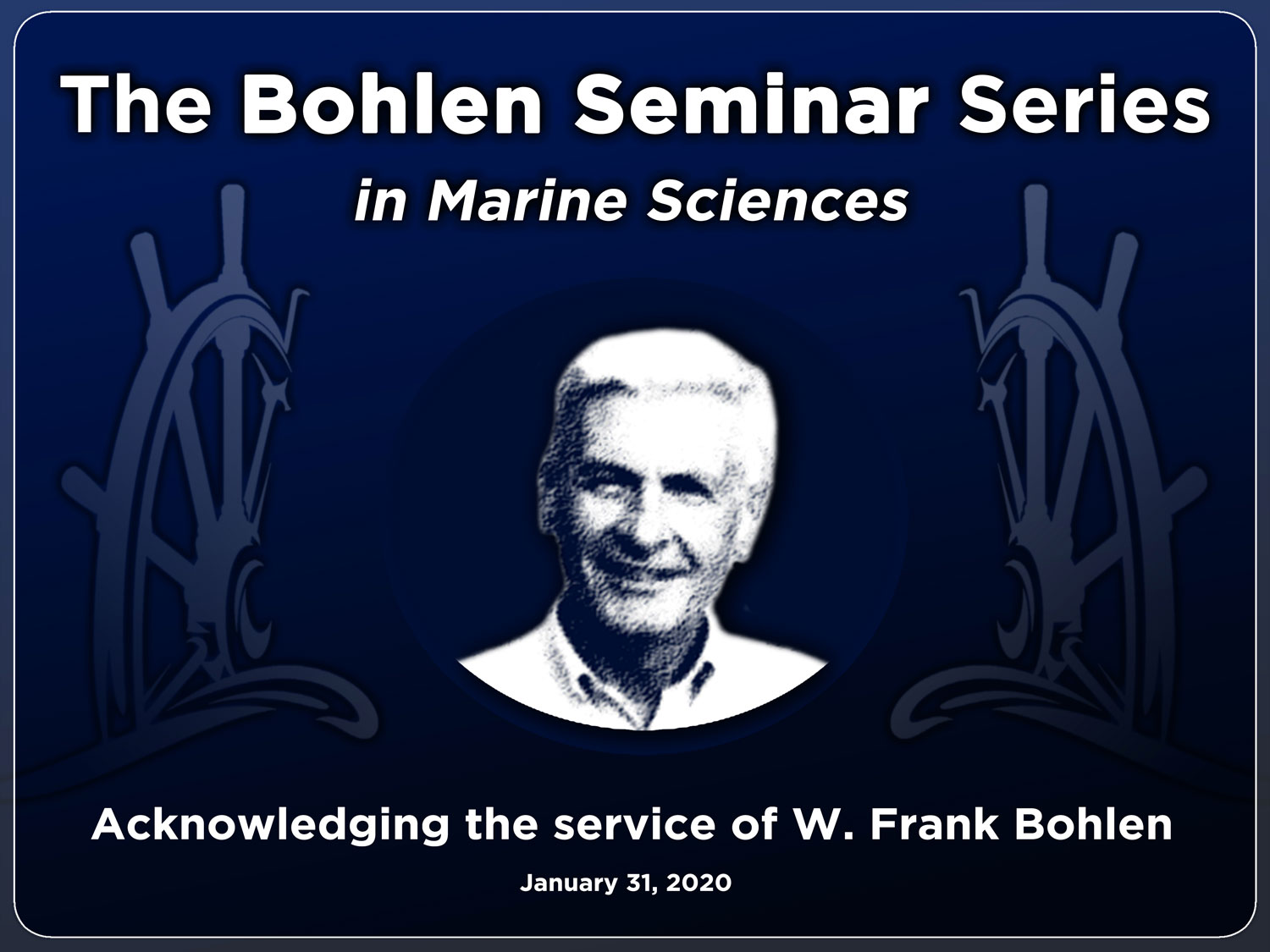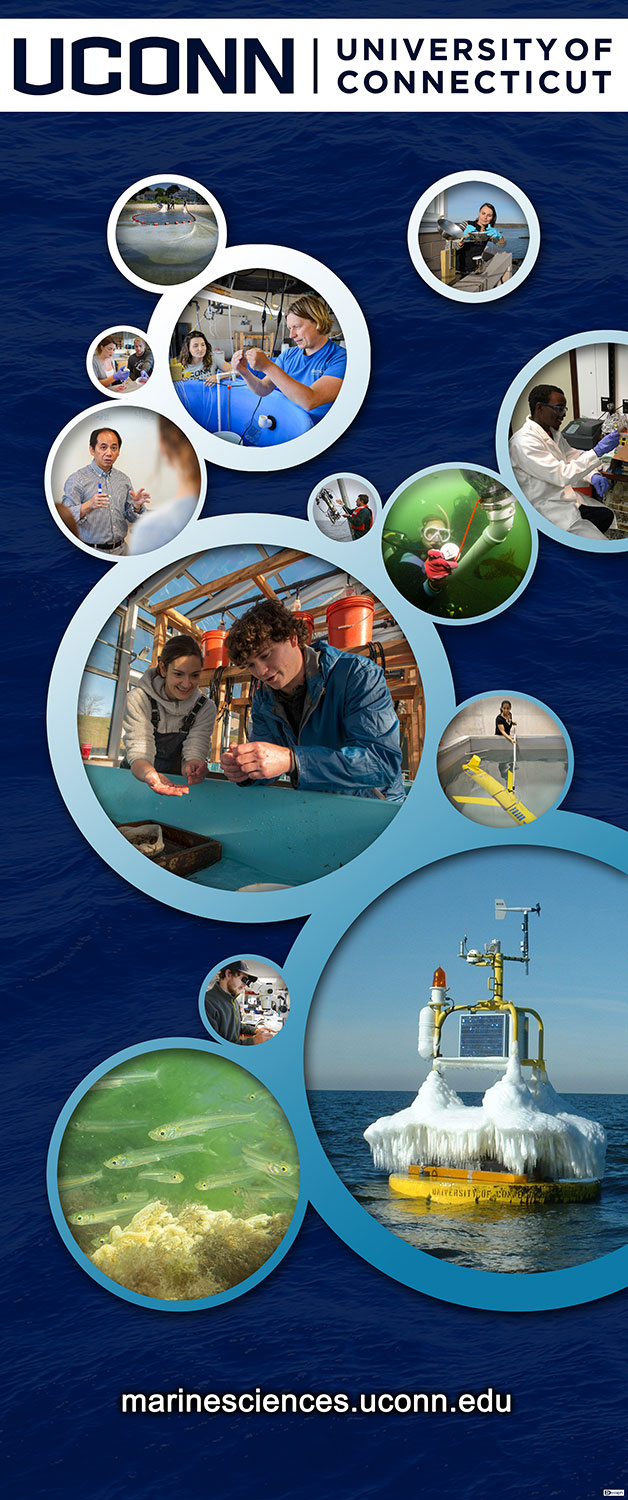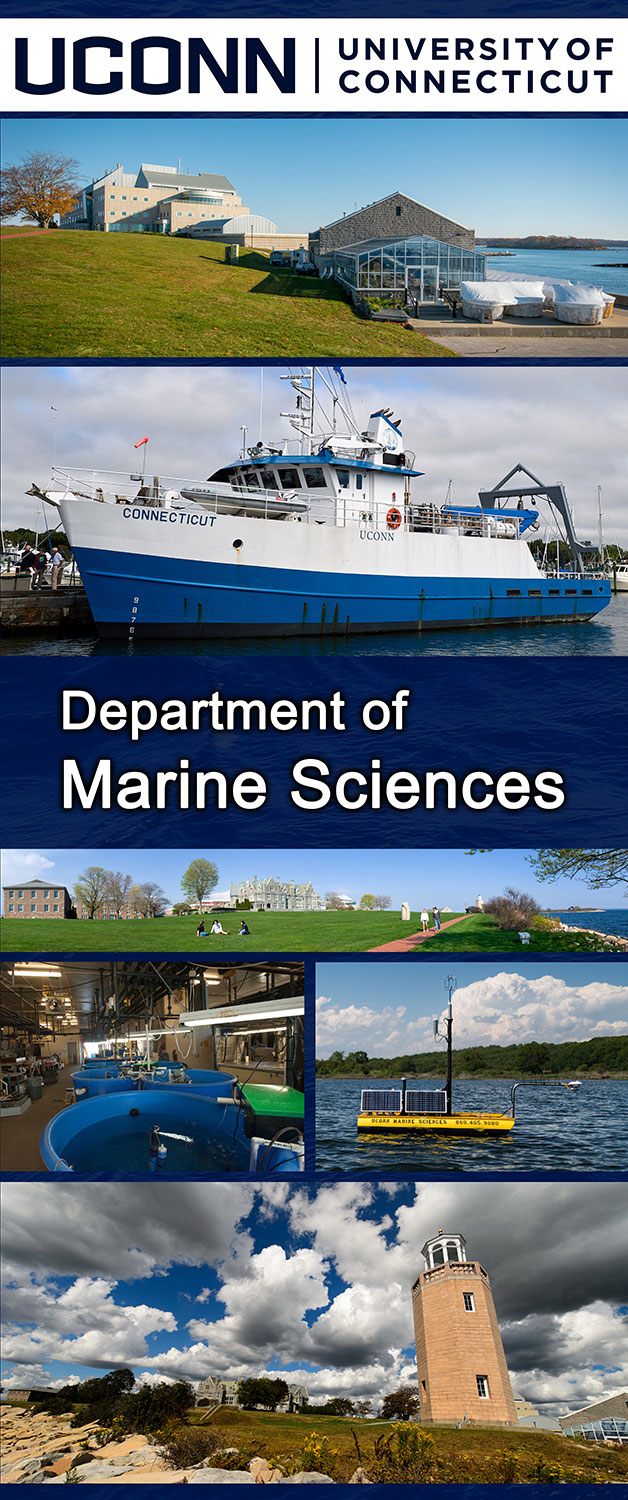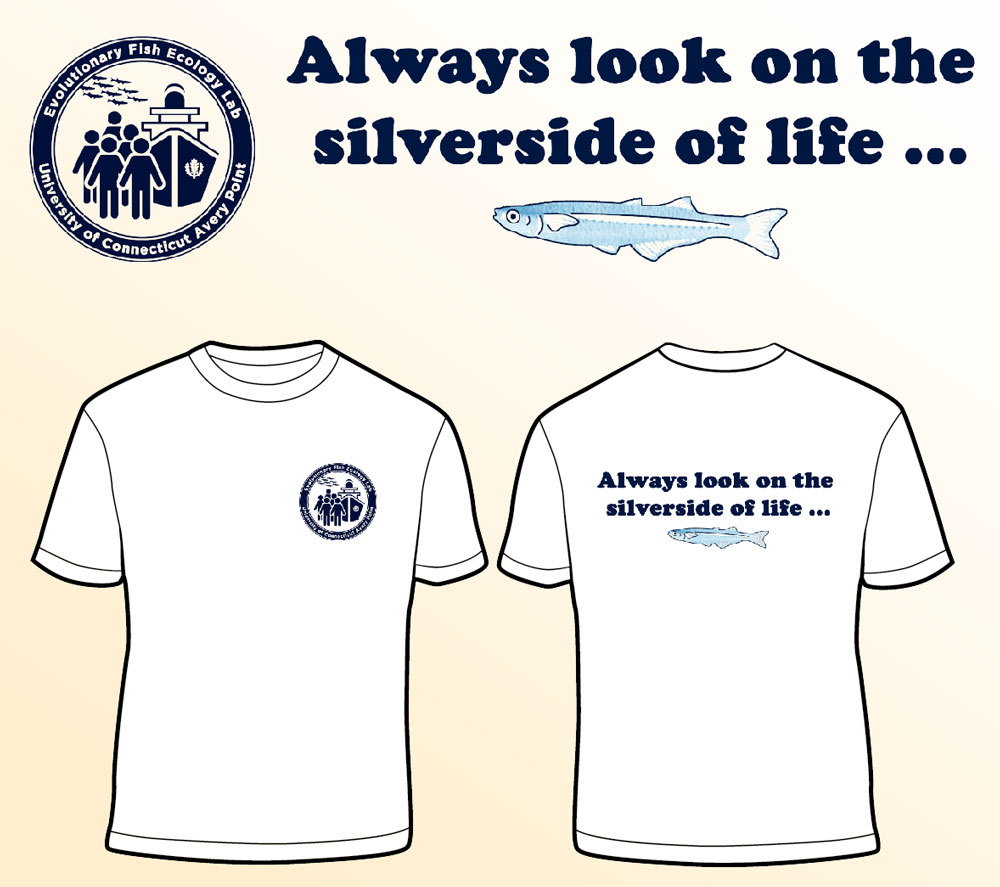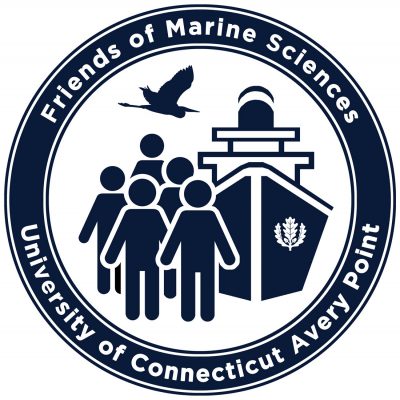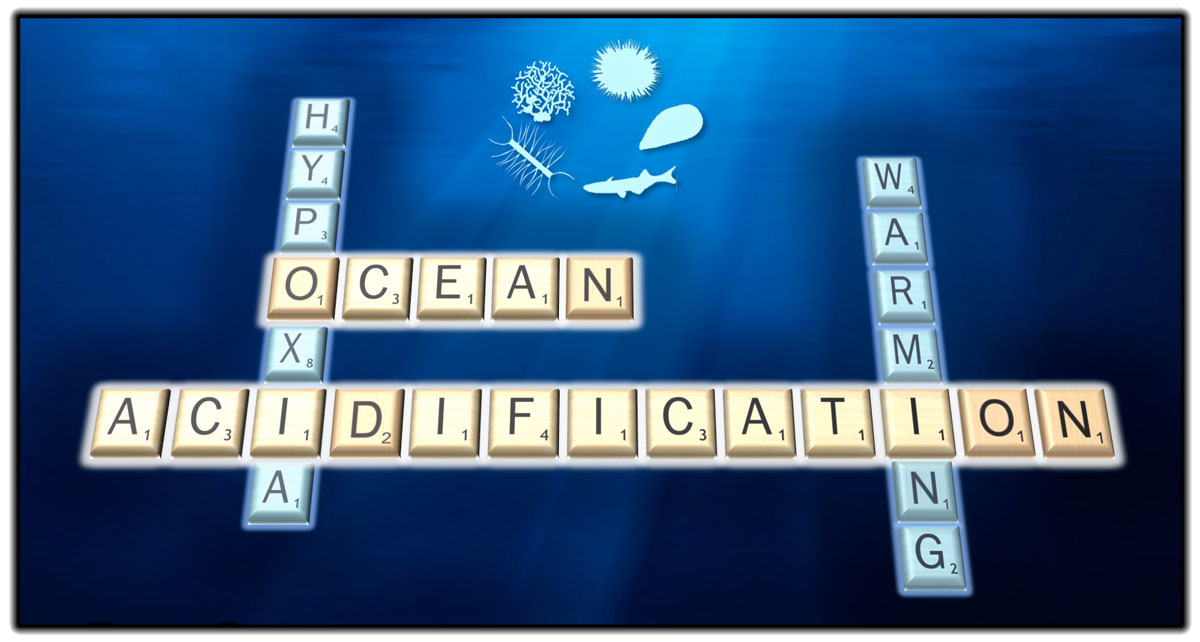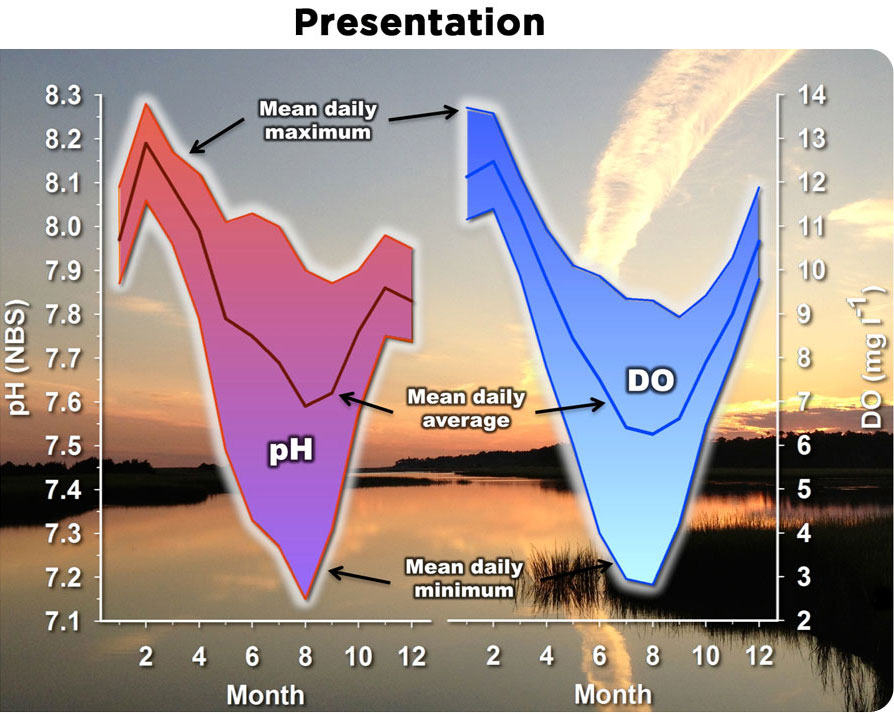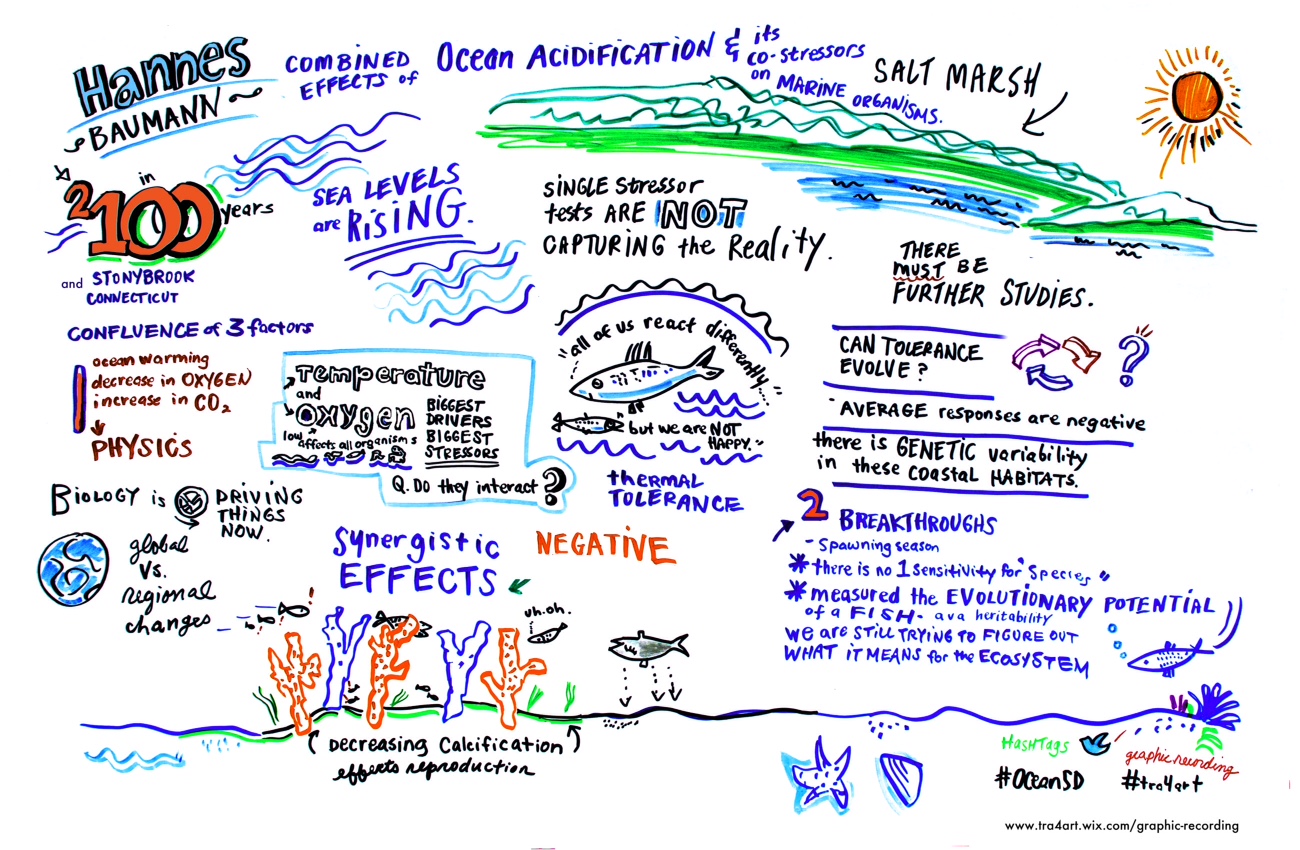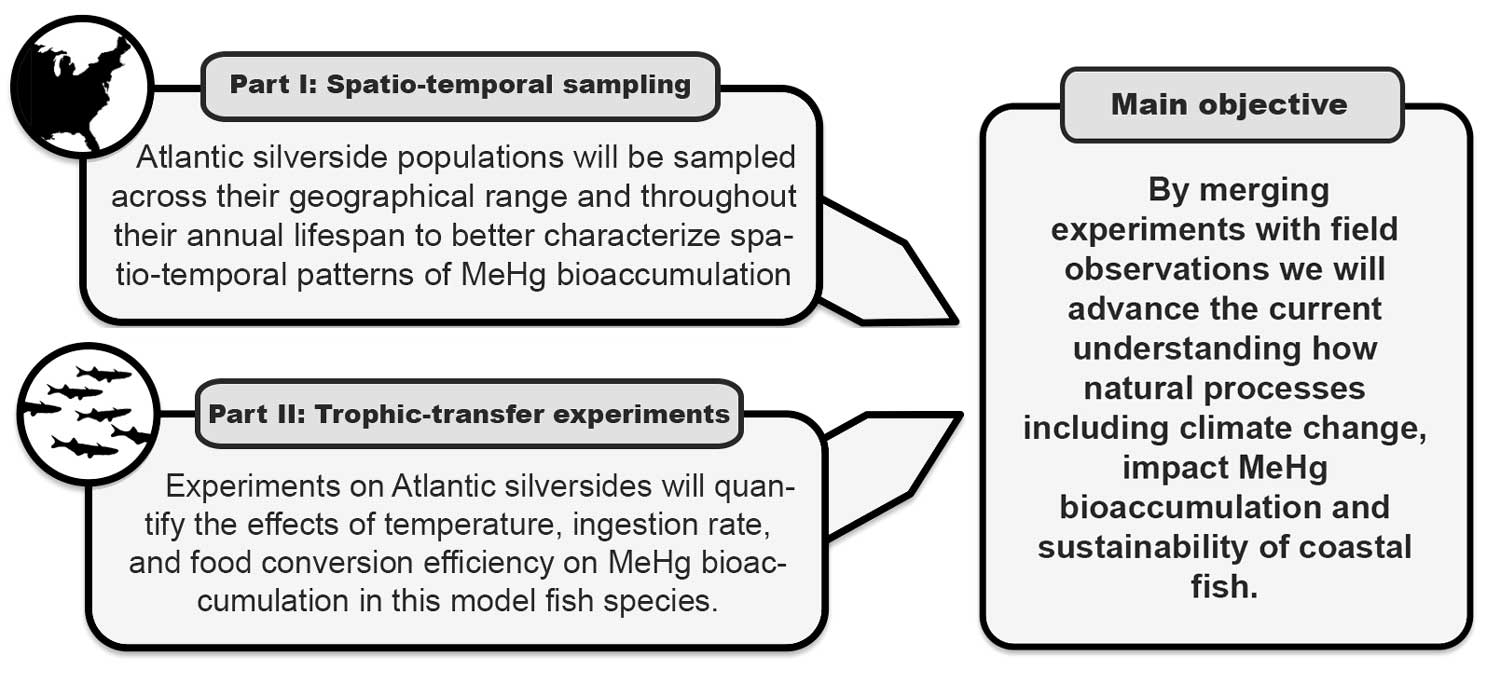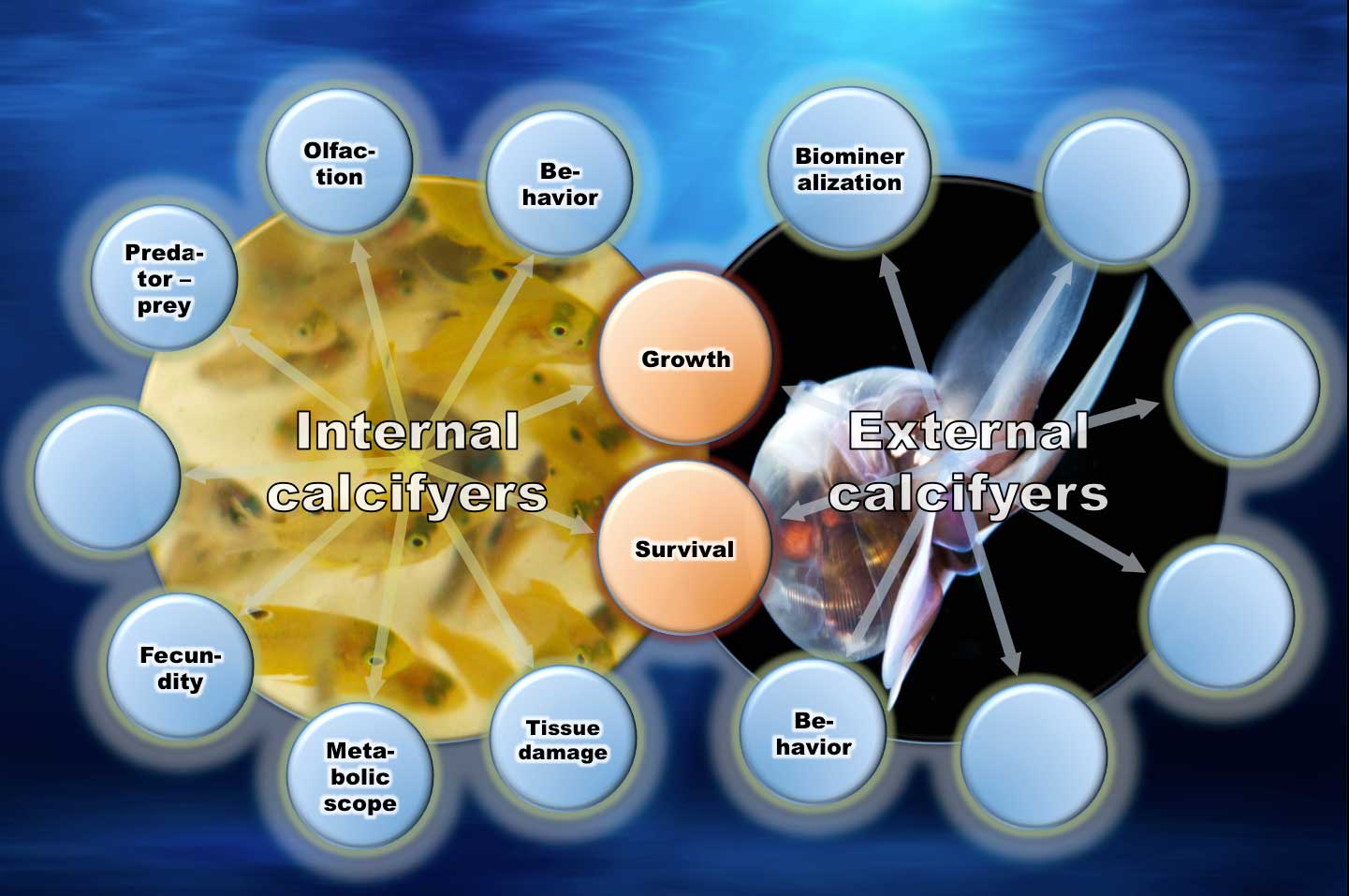
40. What are Atlantic sturgeon doing in the Connecticut River?

39. Atlantic sturgeon size and age distributions
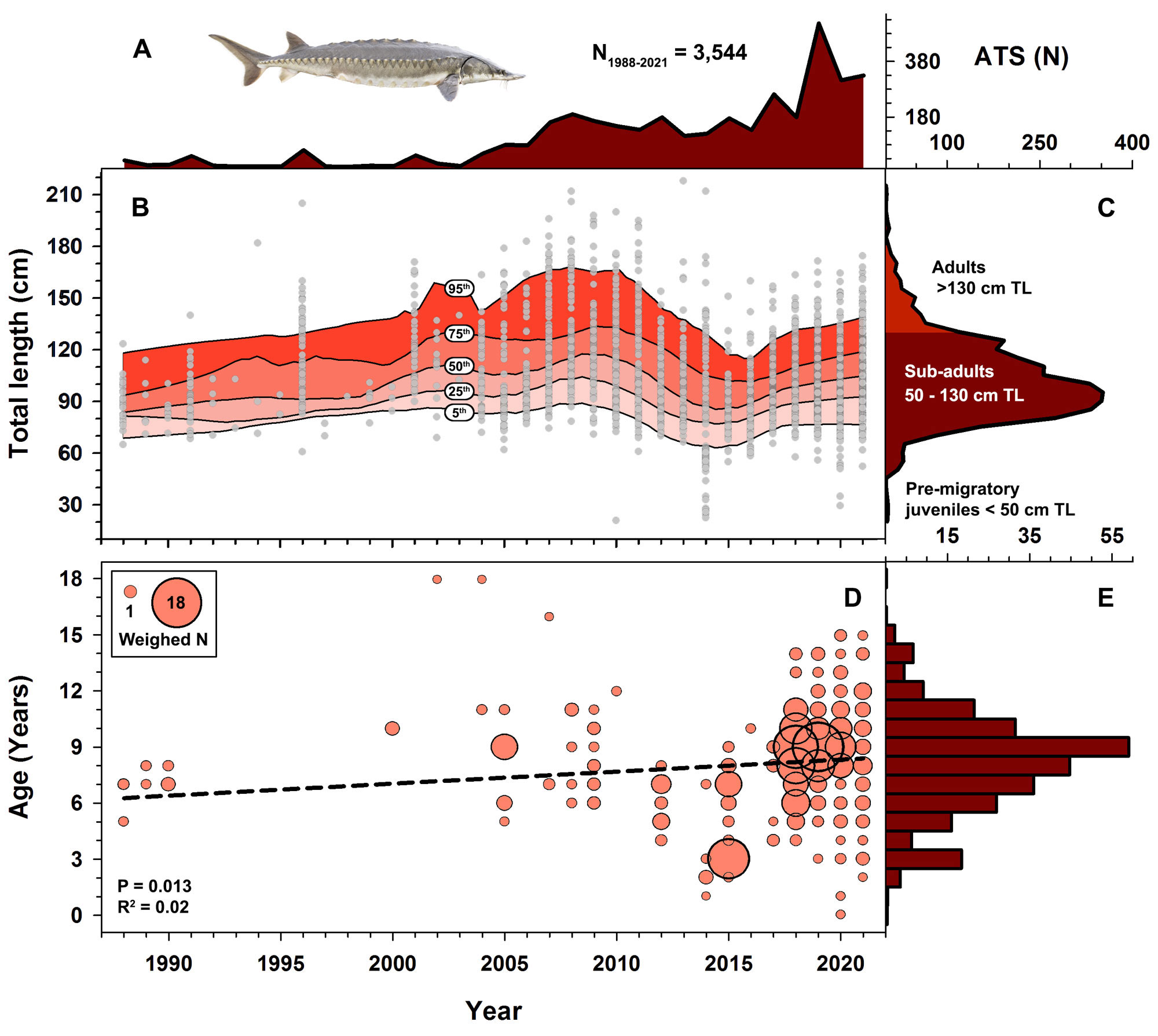
36. Metabarcoding of juvenile black sea bass stomach contents
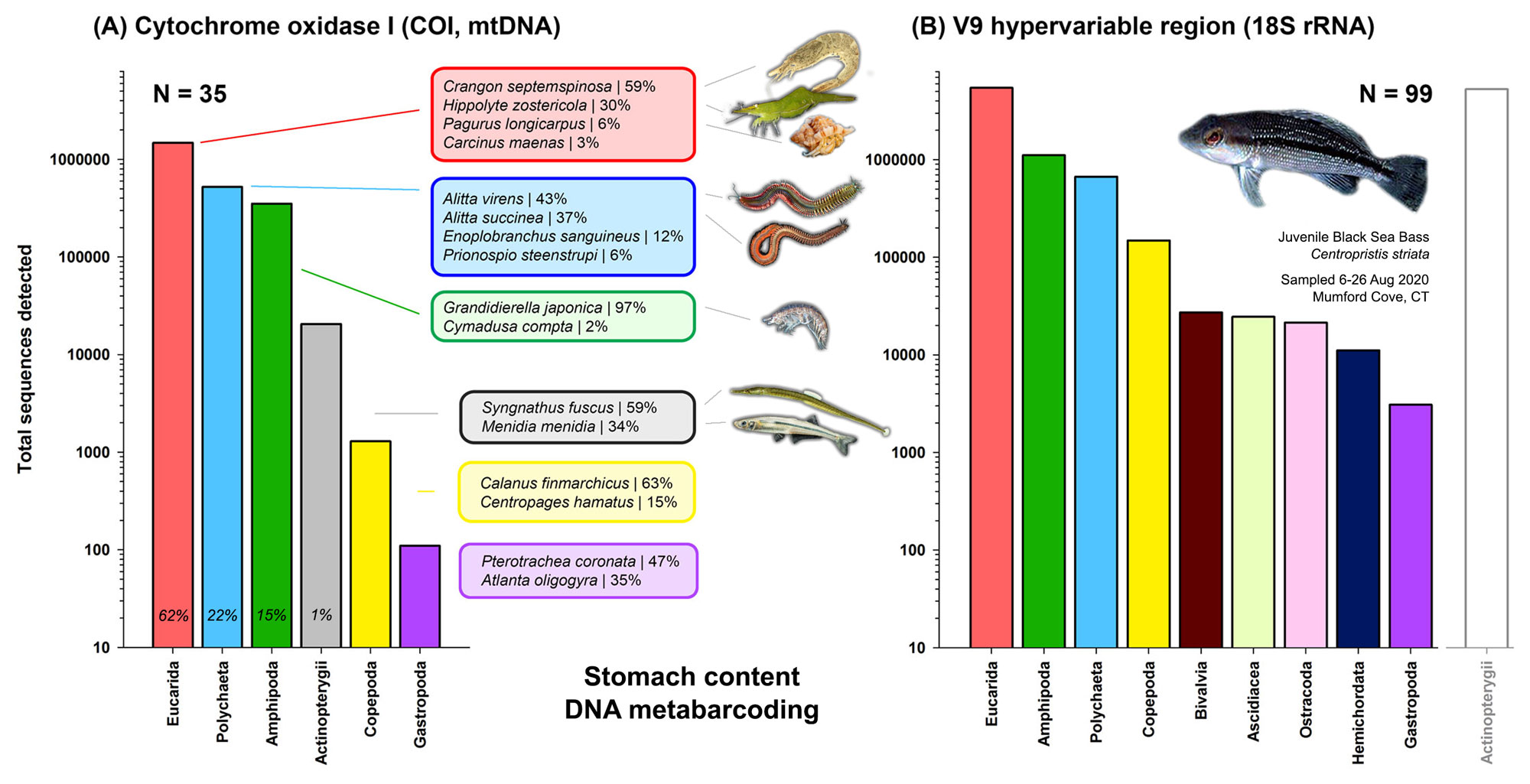
34. Increase in Black Sea Bass
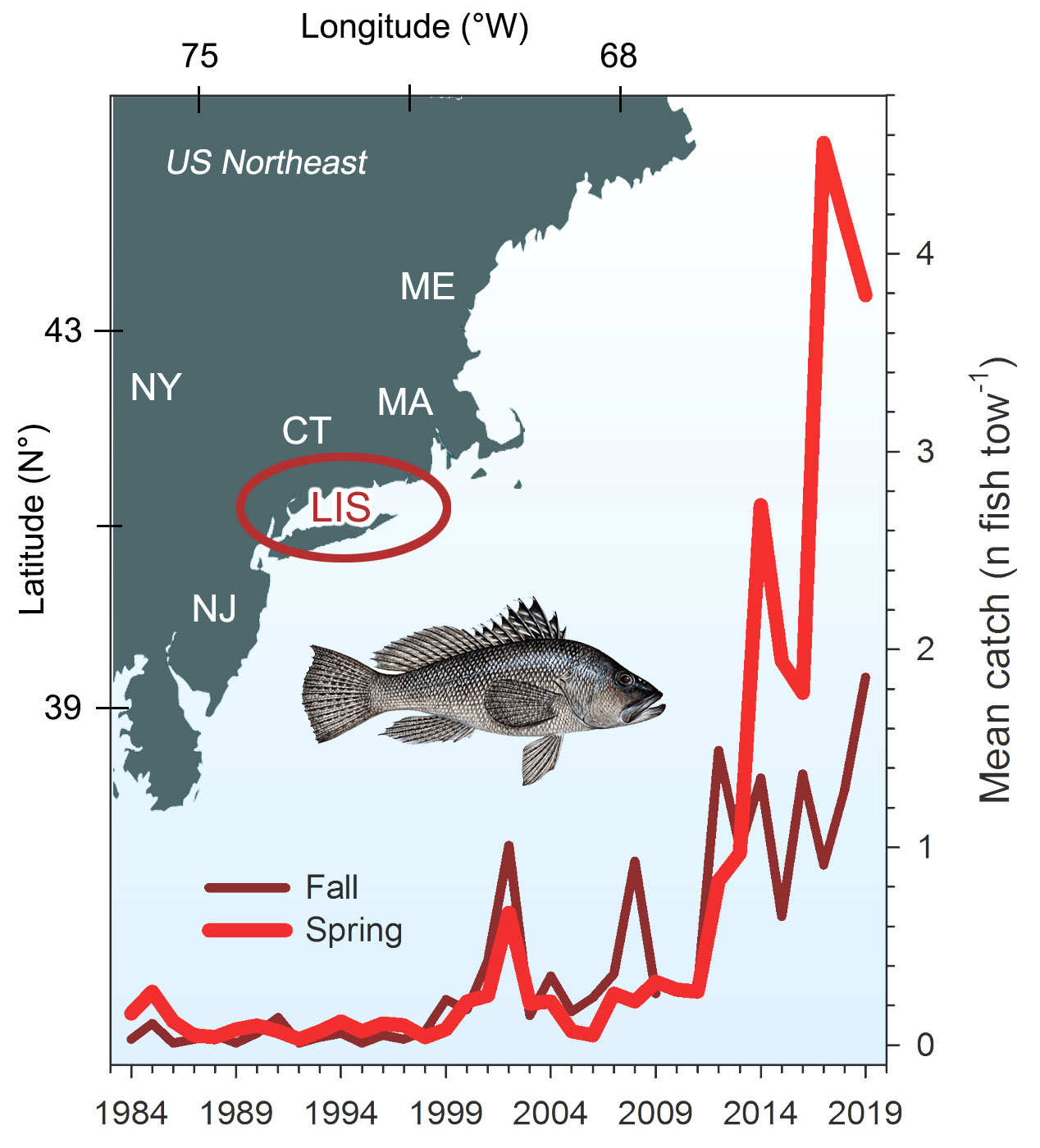
33. Winter growth of Black Sea Bass juveniles
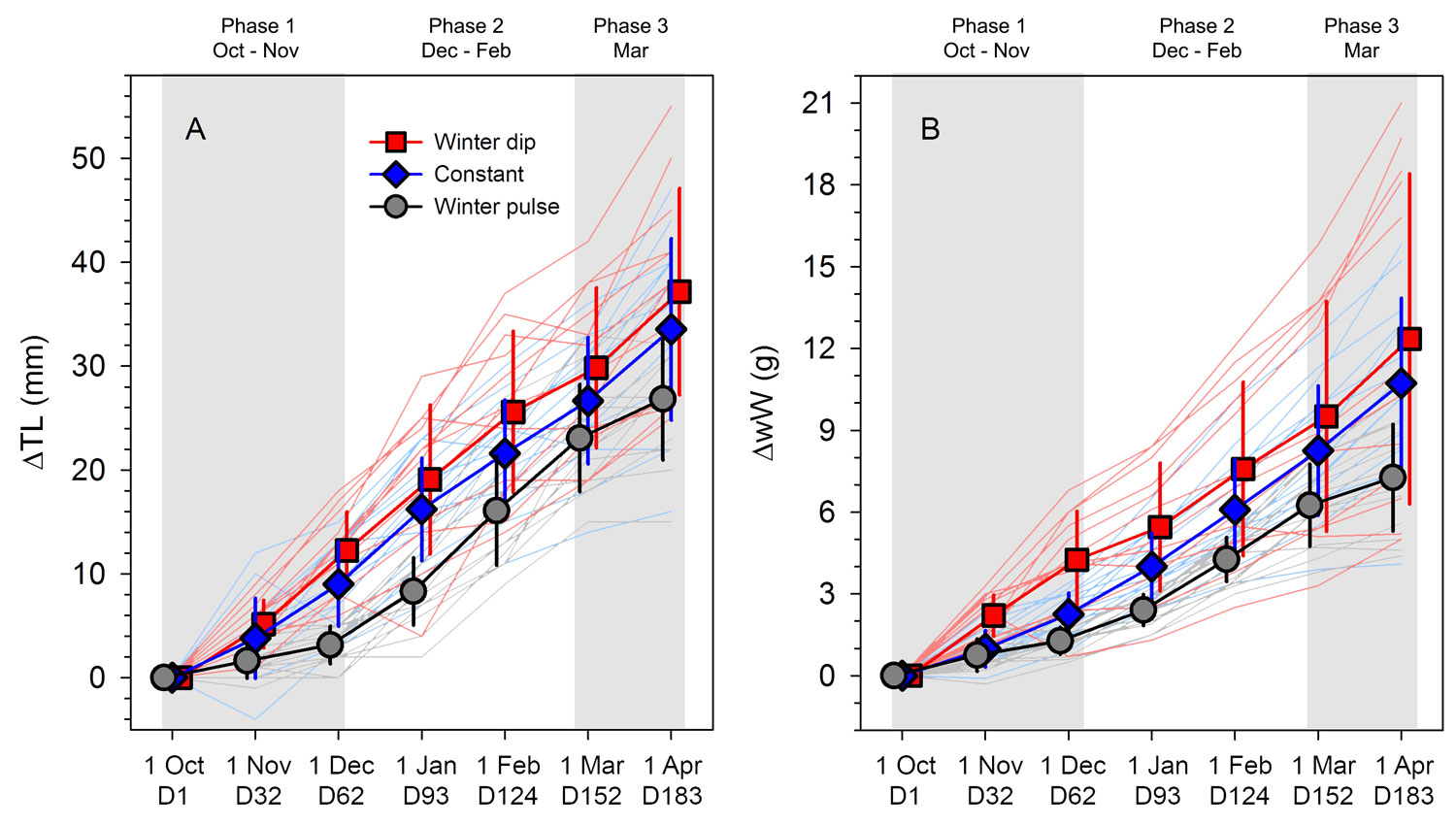
32. Black Sea Bass stomach content analysis

31. Dissolved oxygen conditions in Mumford Cove
MatLab animation of high-frequency dissolved oxygen (blue, 13-152%) measurements between 10 July - 31 August 2022 in Mumford Cove. Tick marks along the X-axis correspond to 5 days. Environmental monitoring 2015-22
29. Mumford Cove Environmental monitoring 2015-22
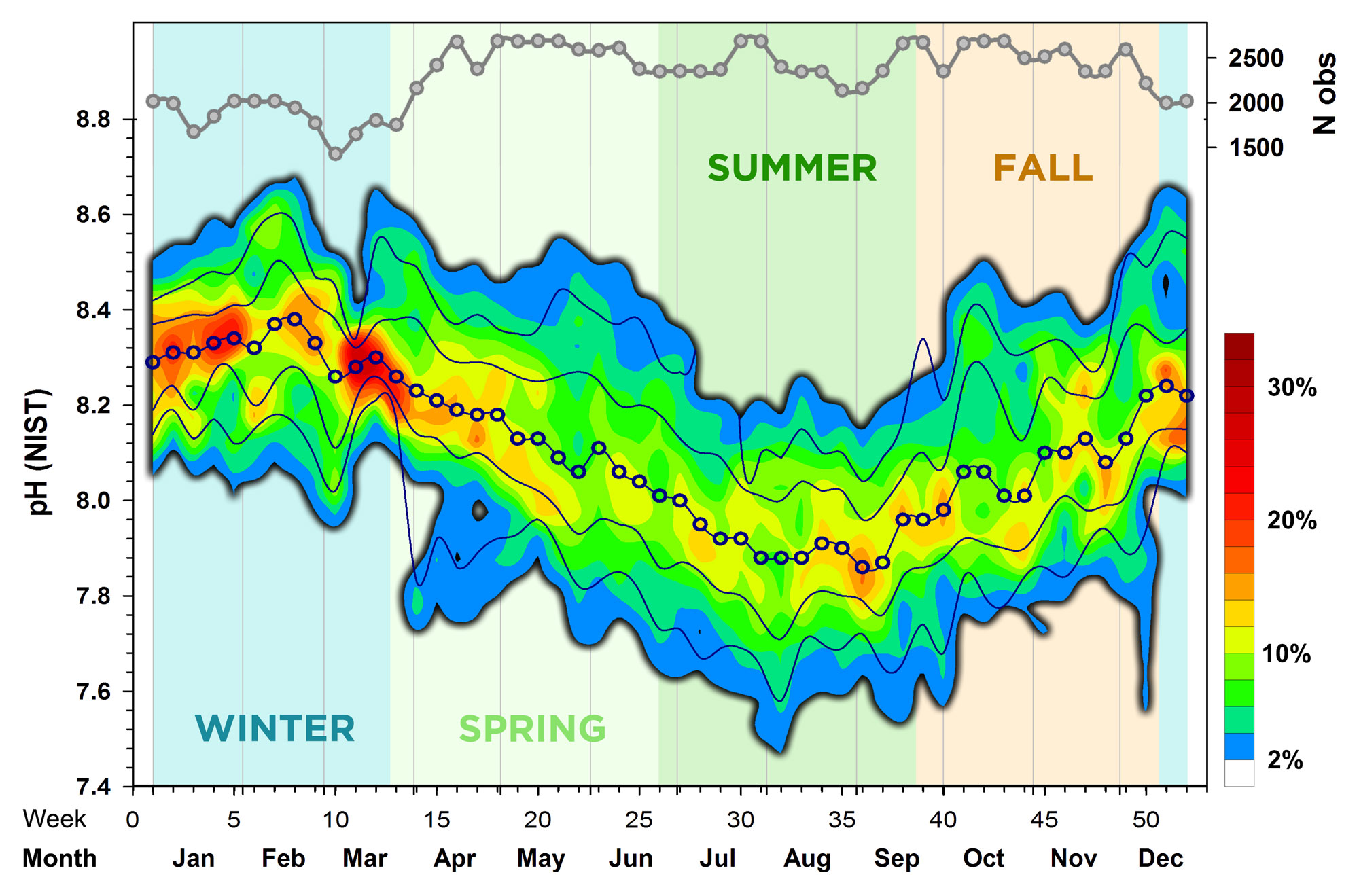
28. Genetic separation of A. dubius

27. Separation of 3 sand lance species based nuclear and mitochondrial DNA (Jones et al. ICES JMS 2022)

26. CO2-dependent hatching success of sand lance in the context of regional pCO2 projections. (Baumann et al. MEPS 2022)
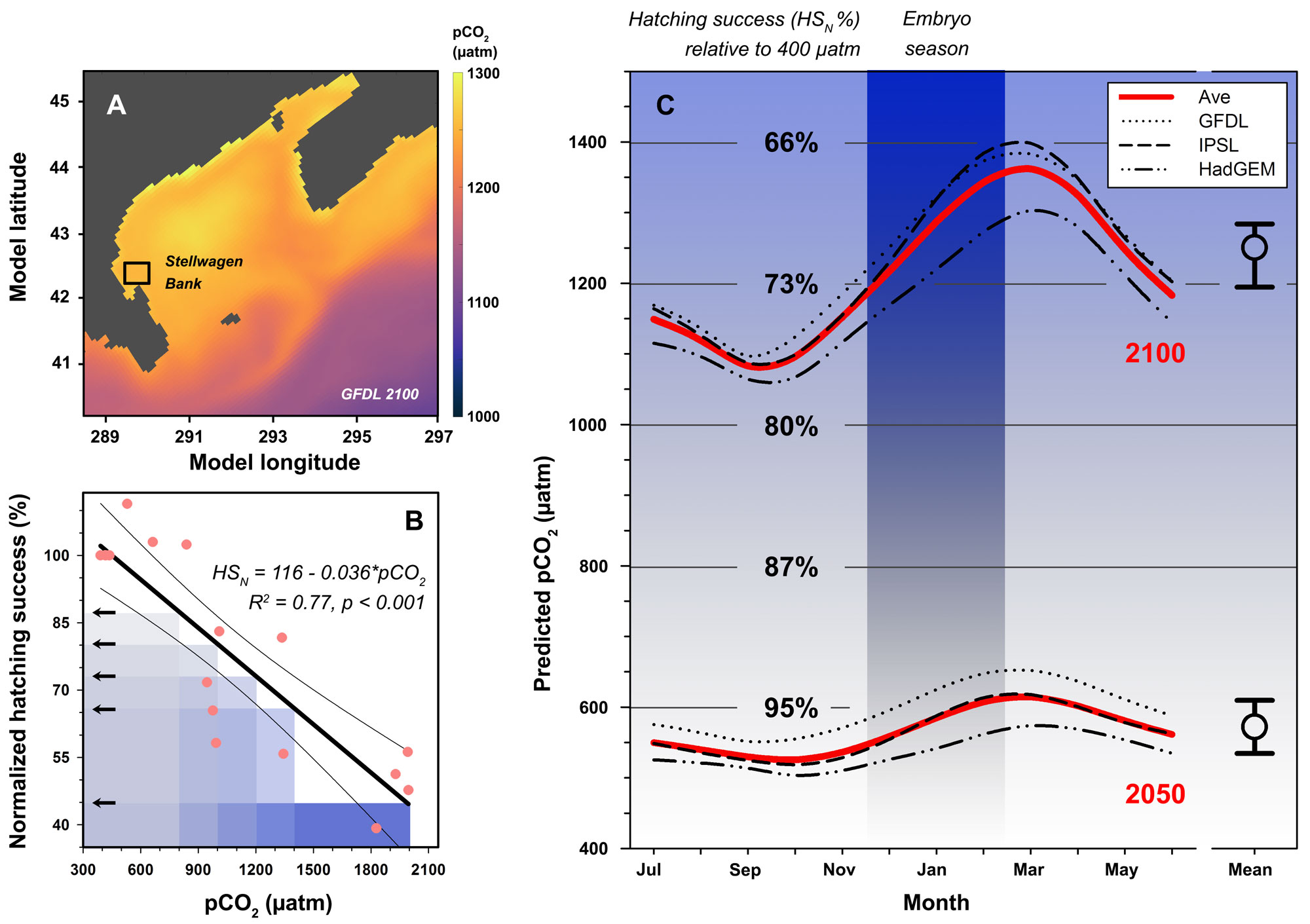
24. 44th Larval Fish Conference 2021 - Iconography

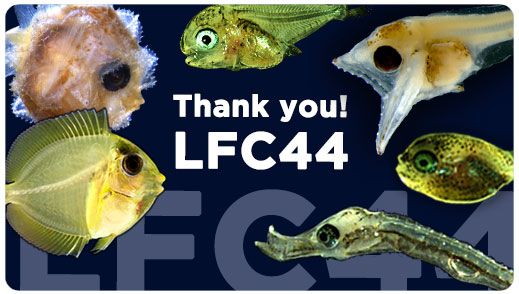

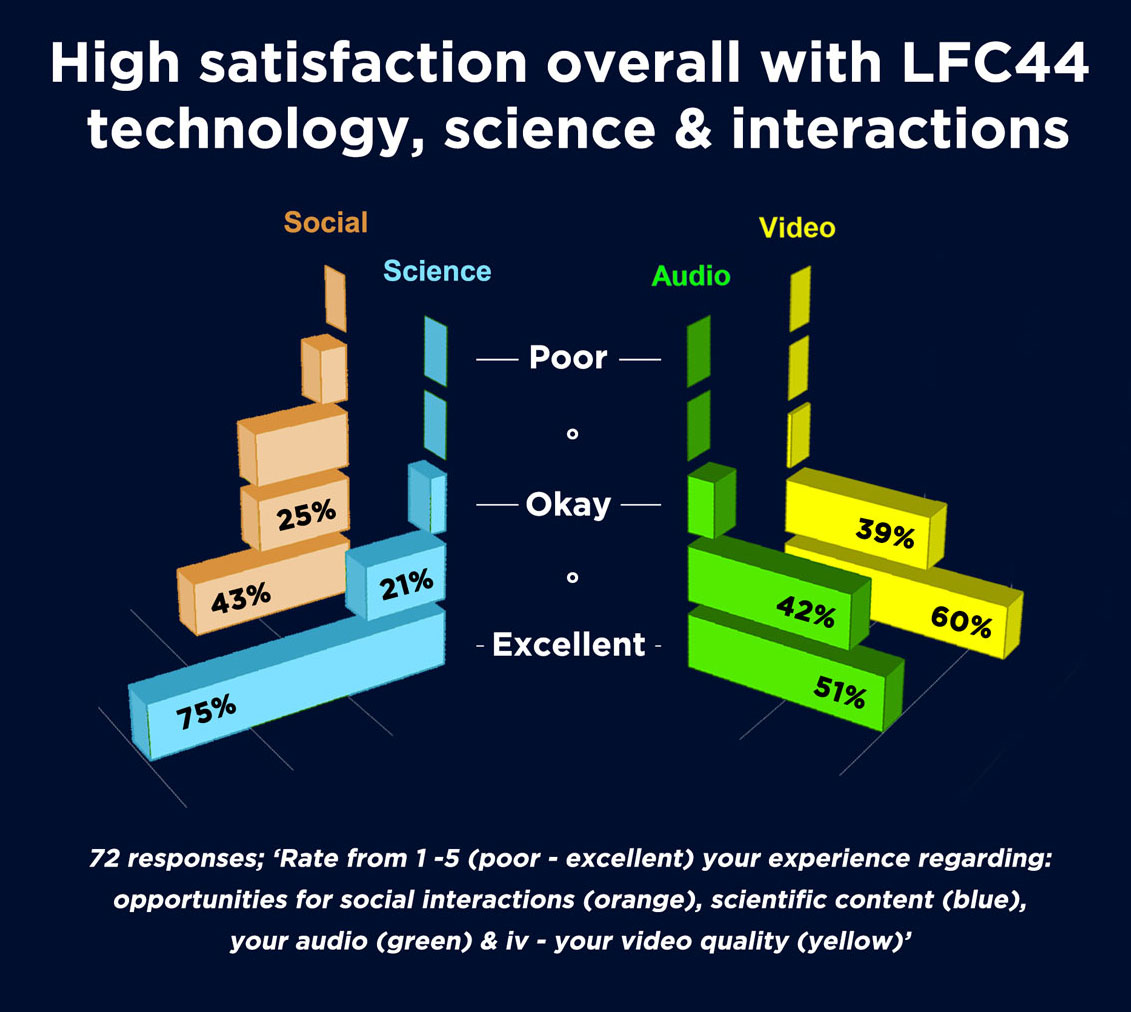
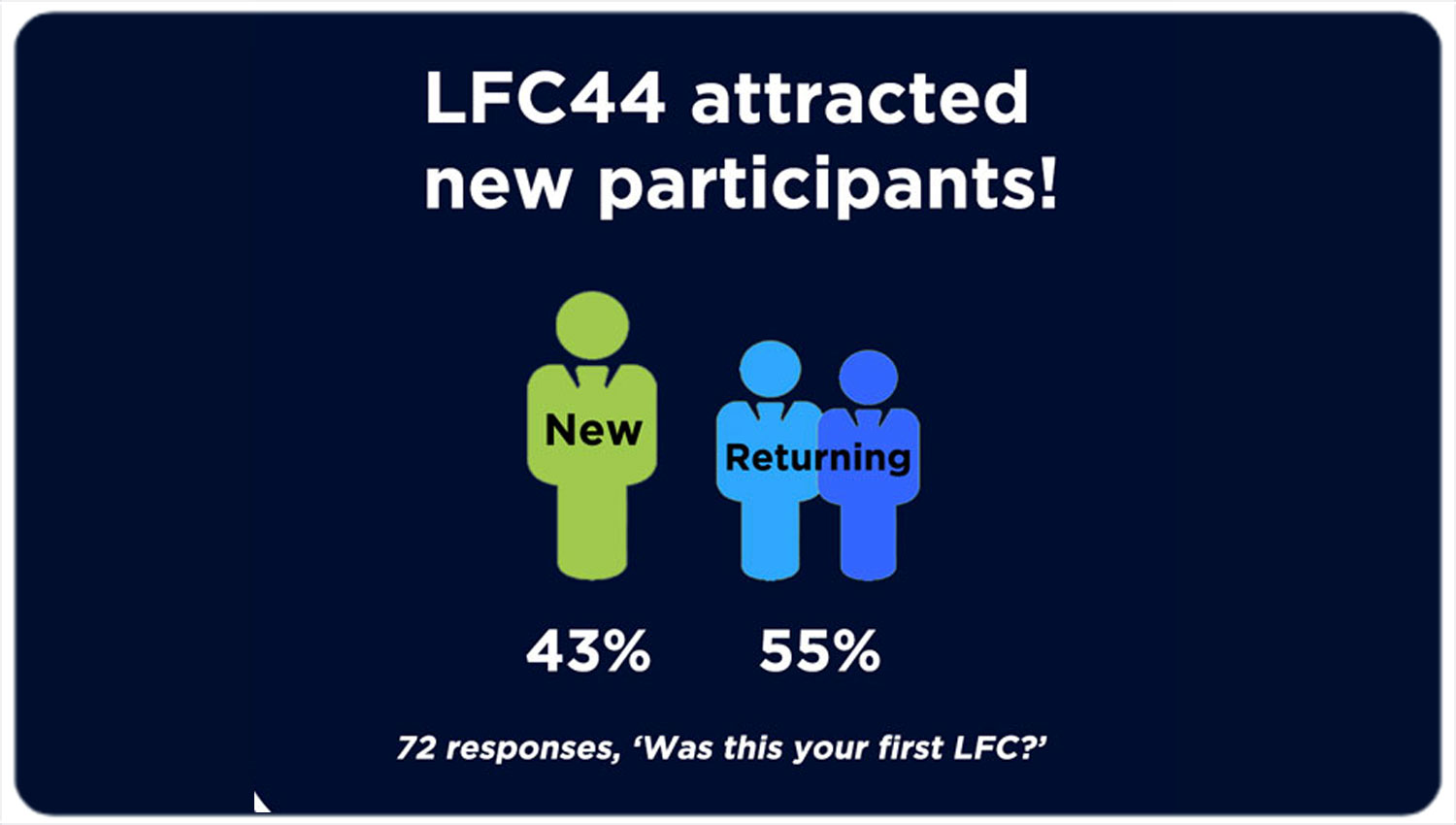
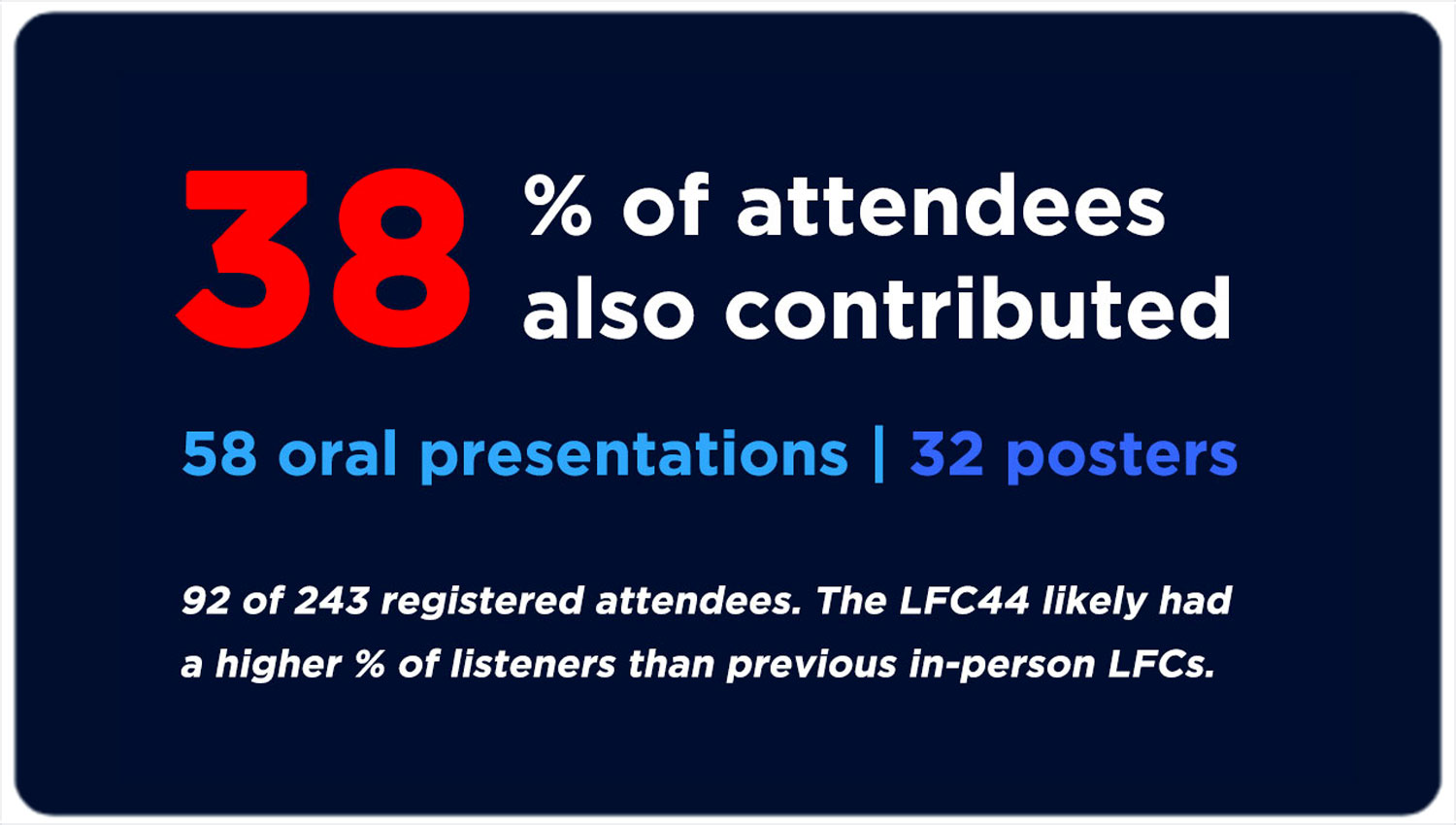
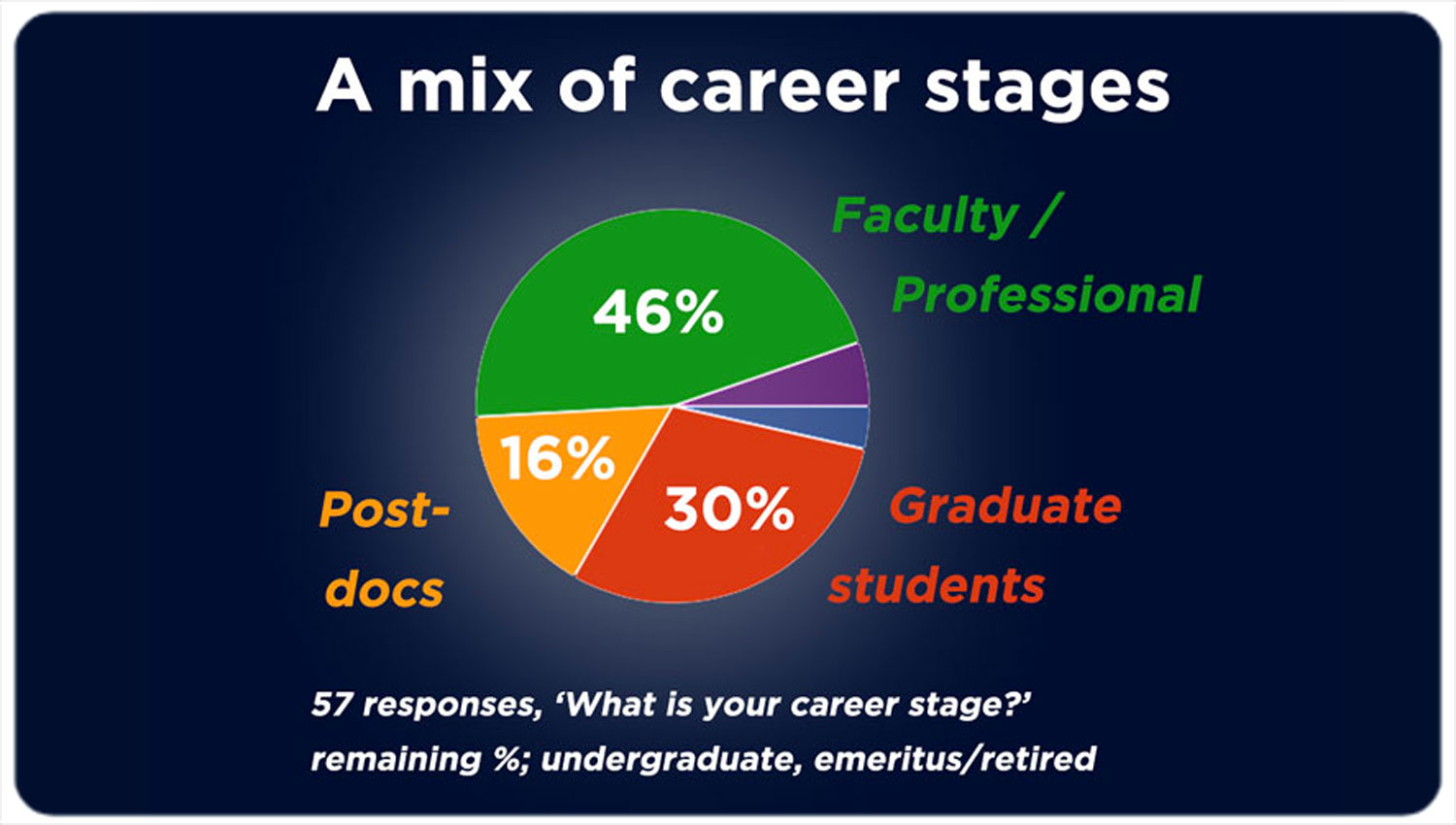
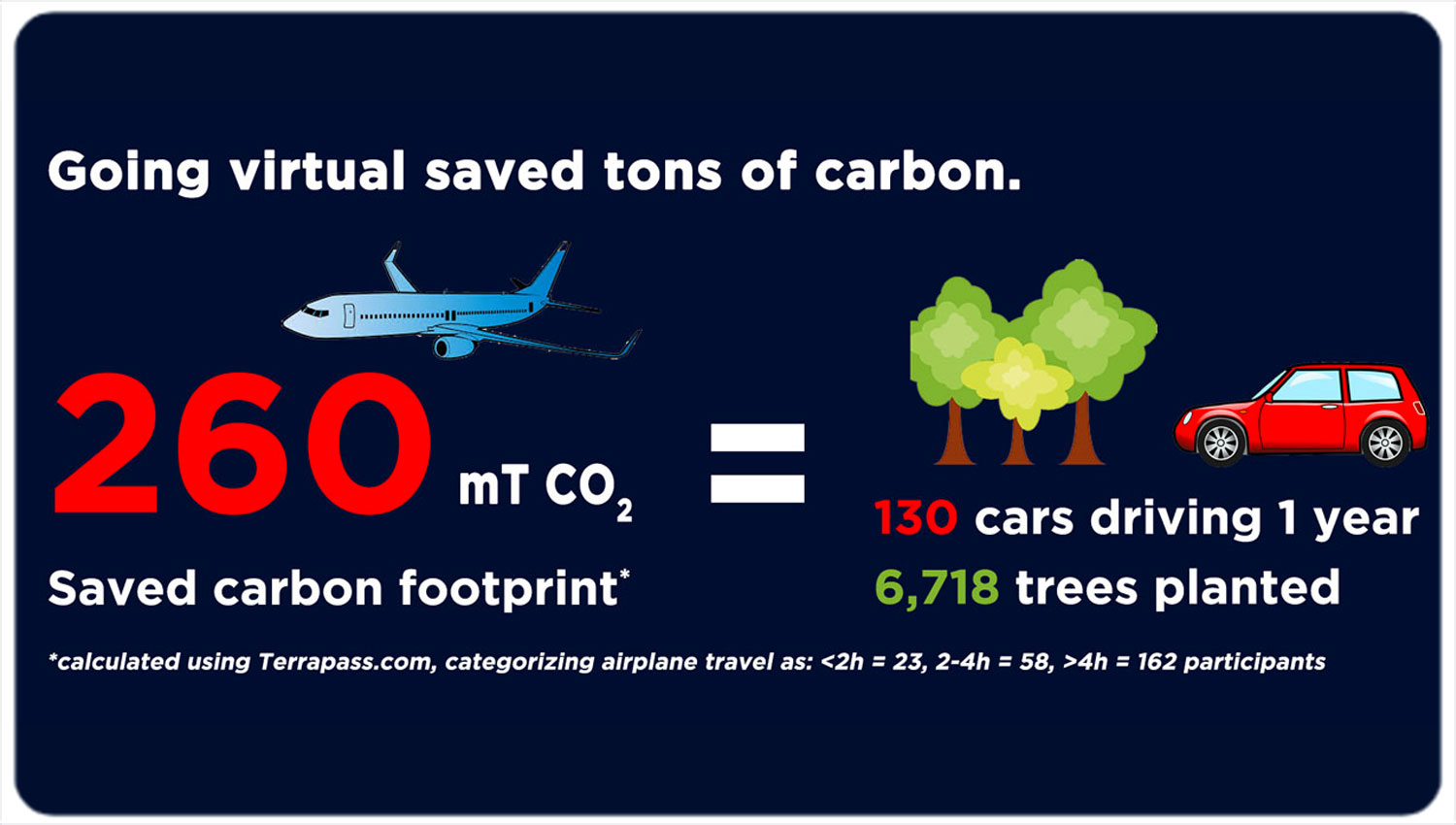
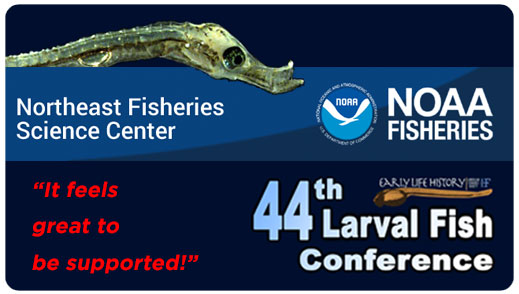
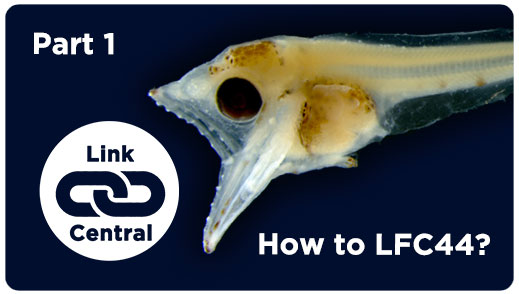
22. Scientific illustrations for Chapter 11: Fish Ecology (Marine Biology, eds. Pan, J. & Pratolongo, P.D). in press
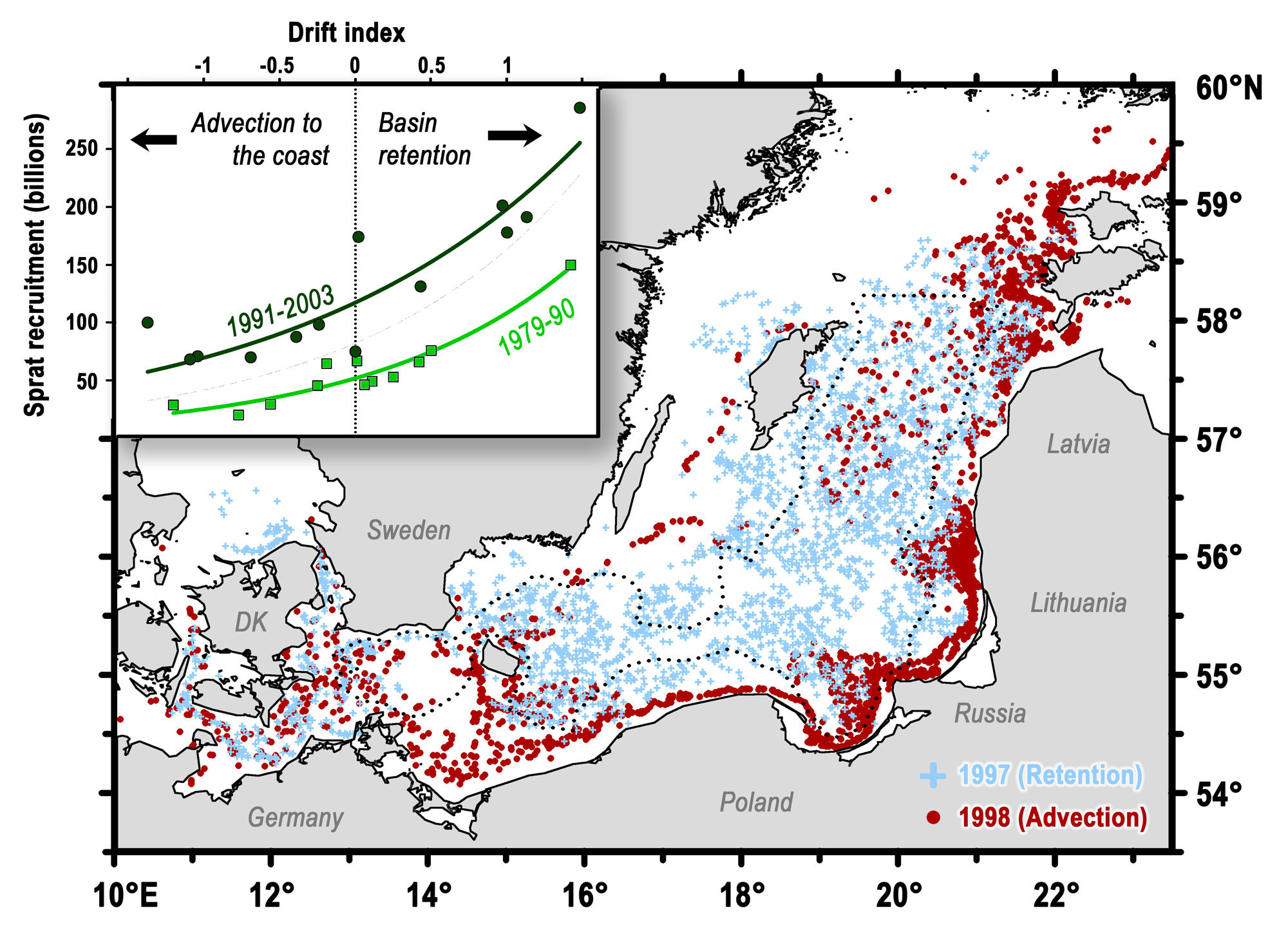 Recruitment success in Baltic sprat Sprattus sprattus is related to the degree of retentive vs. dispersive hydrodynamic circulation patterns.
Recruitment success in Baltic sprat Sprattus sprattus is related to the degree of retentive vs. dispersive hydrodynamic circulation patterns.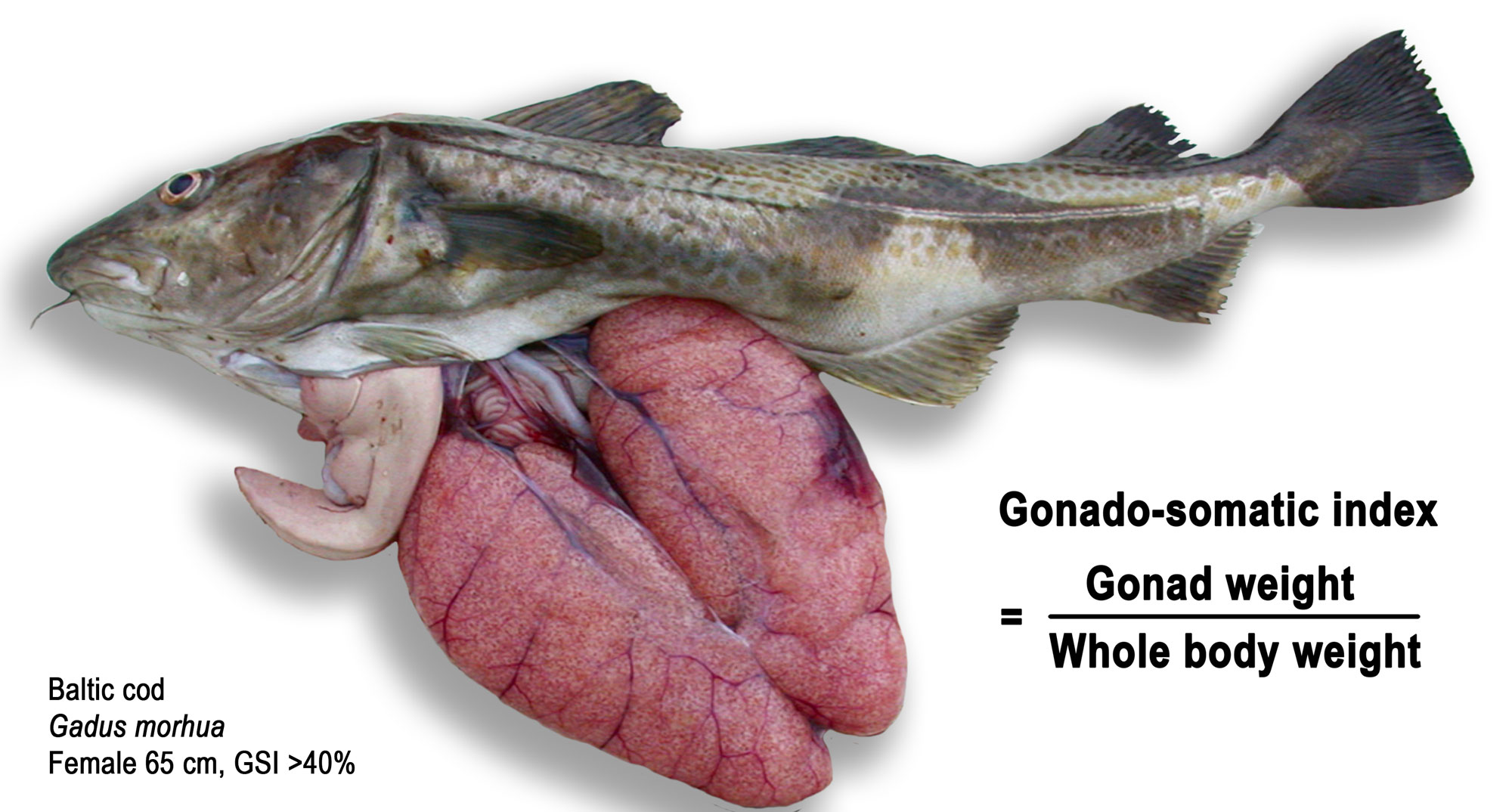 Spawning-ripe Atlantic cod Gadus morhua female caught in summer 2002 in the Baltic Sea.
Spawning-ripe Atlantic cod Gadus morhua female caught in summer 2002 in the Baltic Sea.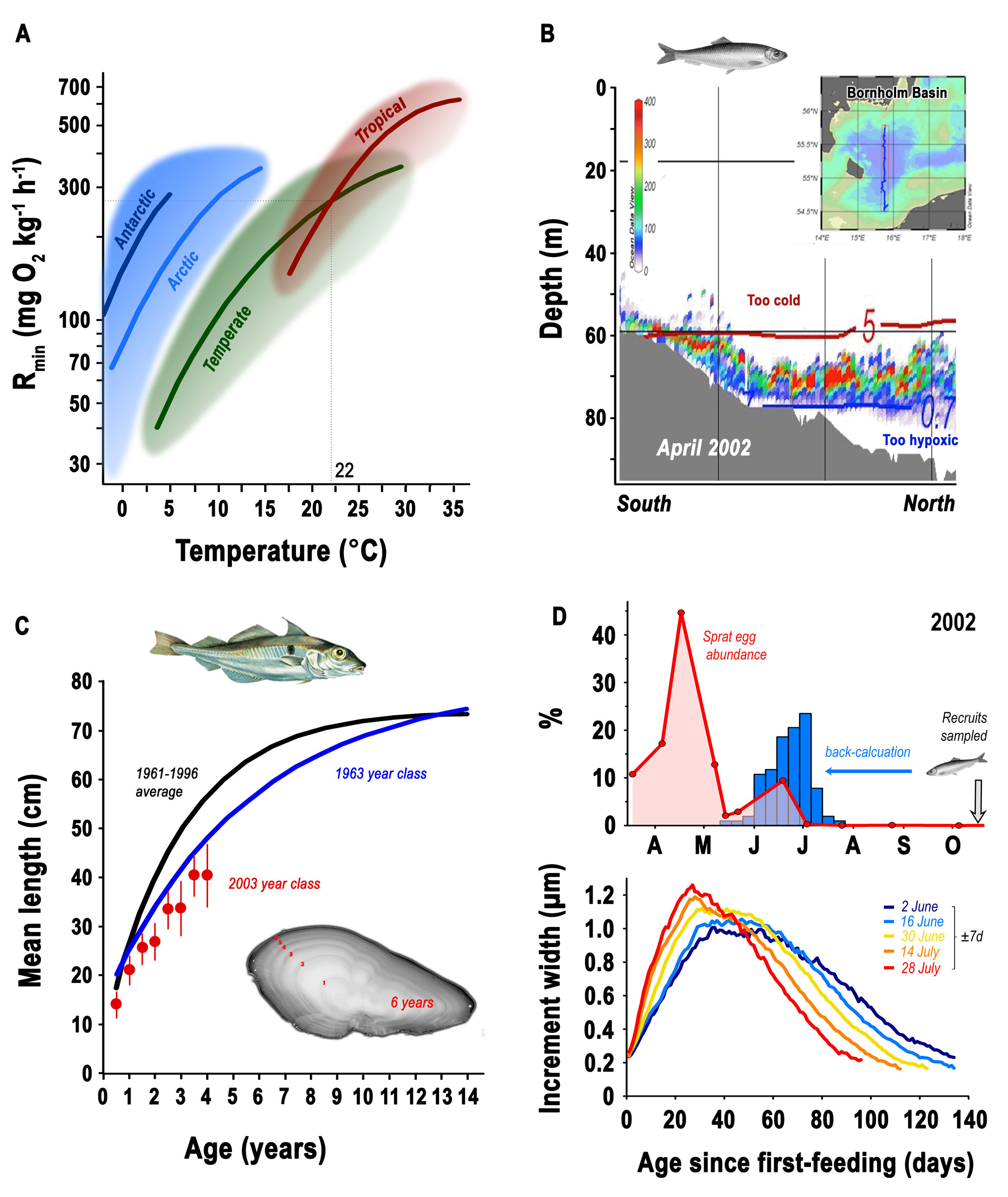 A-Regional adaptations in resting metabolism (Rmin) across polar, temperate, and tropical fish species. B – Temperature and oxygen as directing factors on the vertical distribution of Sprattus sprattus overwintering in the Bornholm Basin of the Baltic Sea. C – Population age-length relationships for Melanogrammus aeglefinus. D – Insights from otolith microstructure analysis on newly recruited sprat.
A-Regional adaptations in resting metabolism (Rmin) across polar, temperate, and tropical fish species. B – Temperature and oxygen as directing factors on the vertical distribution of Sprattus sprattus overwintering in the Bornholm Basin of the Baltic Sea. C – Population age-length relationships for Melanogrammus aeglefinus. D – Insights from otolith microstructure analysis on newly recruited sprat. Evolution of countergradient growth variation in Menidia menidia.
Evolution of countergradient growth variation in Menidia menidia.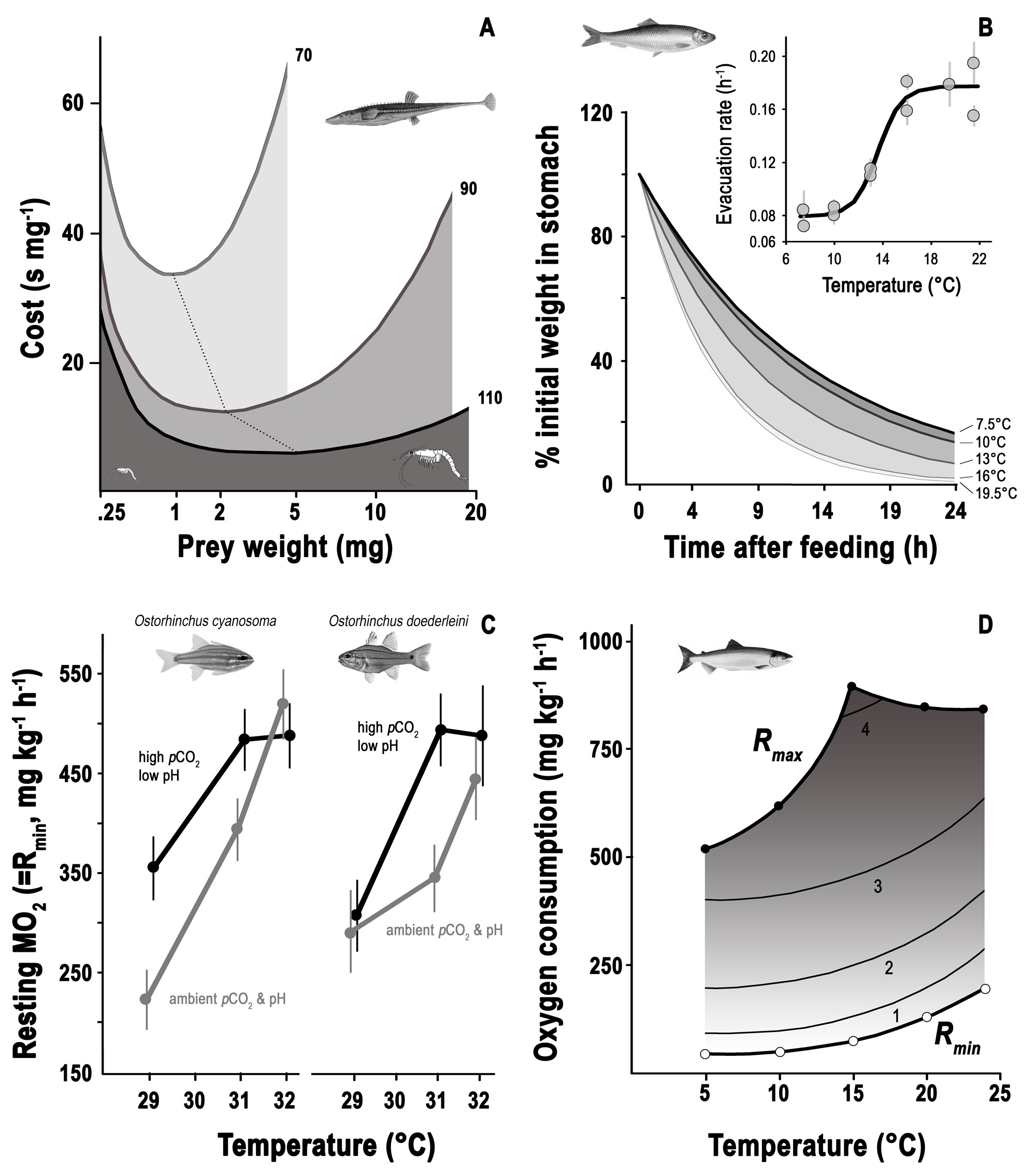 A – Optimal foraging in juvenile Spinachia spinachia feeding on mysid shrimp. B – Temperature dependency of gastric evacuation in Sprattus sprattus (adapted from Bernreuther et al. 2009). C – Interactive effects of CO2 and temperature on resting metabolism (Rmin) in two species of tropical reef fish. D – Temperature-dependency of active (swimming) metabolism (RA) in juvenile Oncorhynchus nerka.
A – Optimal foraging in juvenile Spinachia spinachia feeding on mysid shrimp. B – Temperature dependency of gastric evacuation in Sprattus sprattus (adapted from Bernreuther et al. 2009). C – Interactive effects of CO2 and temperature on resting metabolism (Rmin) in two species of tropical reef fish. D – Temperature-dependency of active (swimming) metabolism (RA) in juvenile Oncorhynchus nerka.
21. Otolith-based sex-specific reconstruction of silverside hatch dates

Pringle, J. & Baumann, H. (2019) Otolith-based growth reconstructions in young-of-year Atlantic silversides (Menidia menidia) and their implications for sex-selective survival. MEPS 632: 193-204
17. Robust quantification of fish early life CO2 sensitivities via serial experimentation

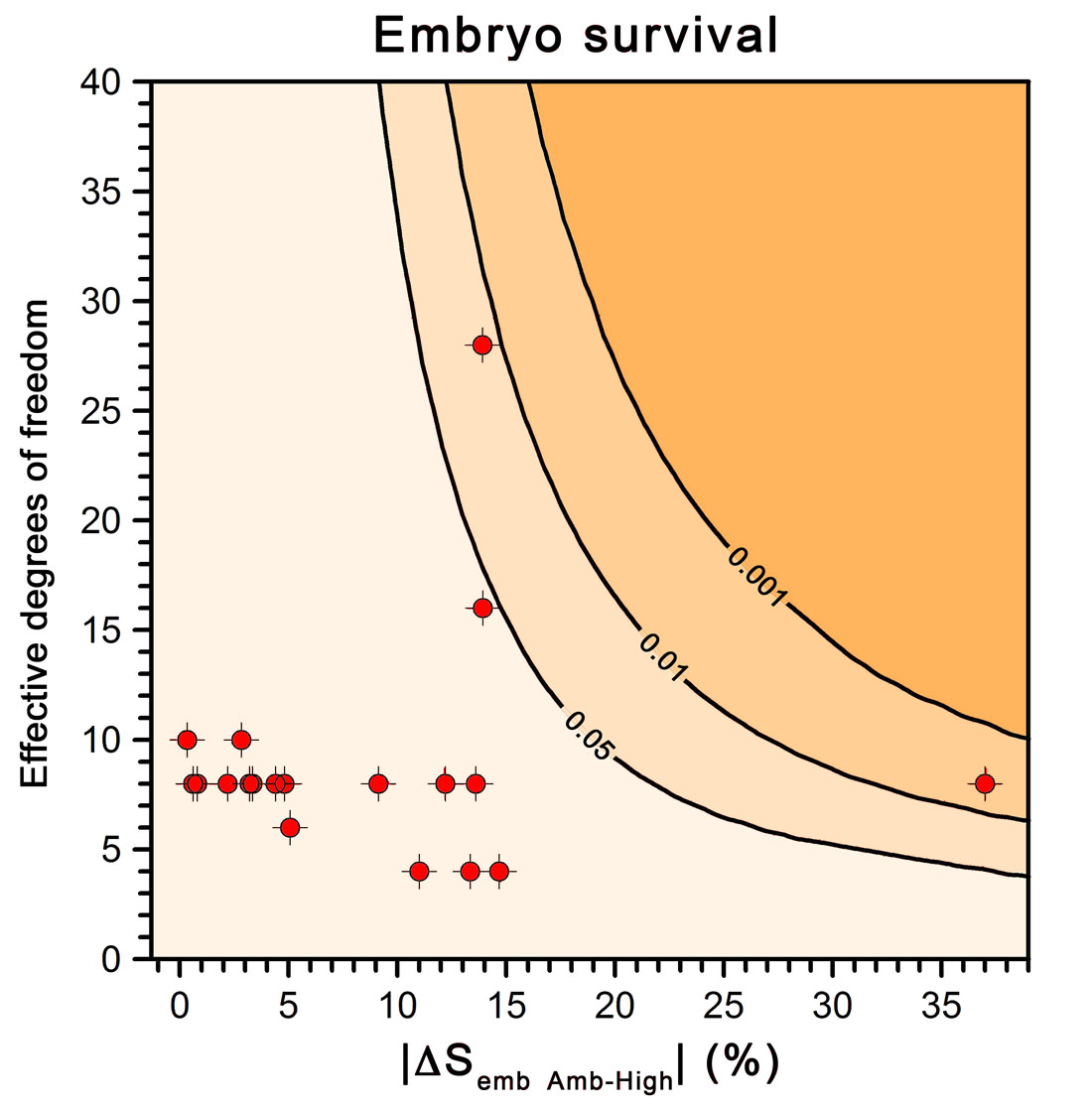
Baumann, H., Cross, E.L., and Murray, C.S. Robust quantification of fish early life CO2 sensitivities via serial experimentation. Biology Letters 14:20180408
15. Ocean variability and Stage Duration hypothesis: a genesis
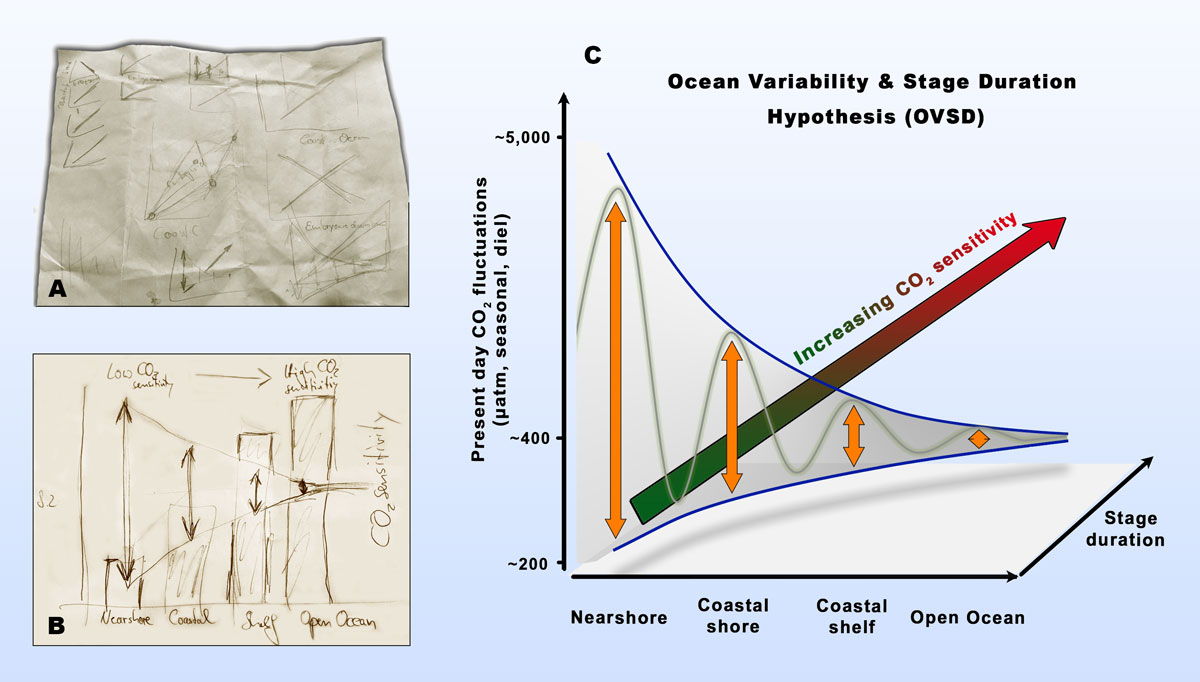
14. Four key areas of advances in experimental ocean acidification research
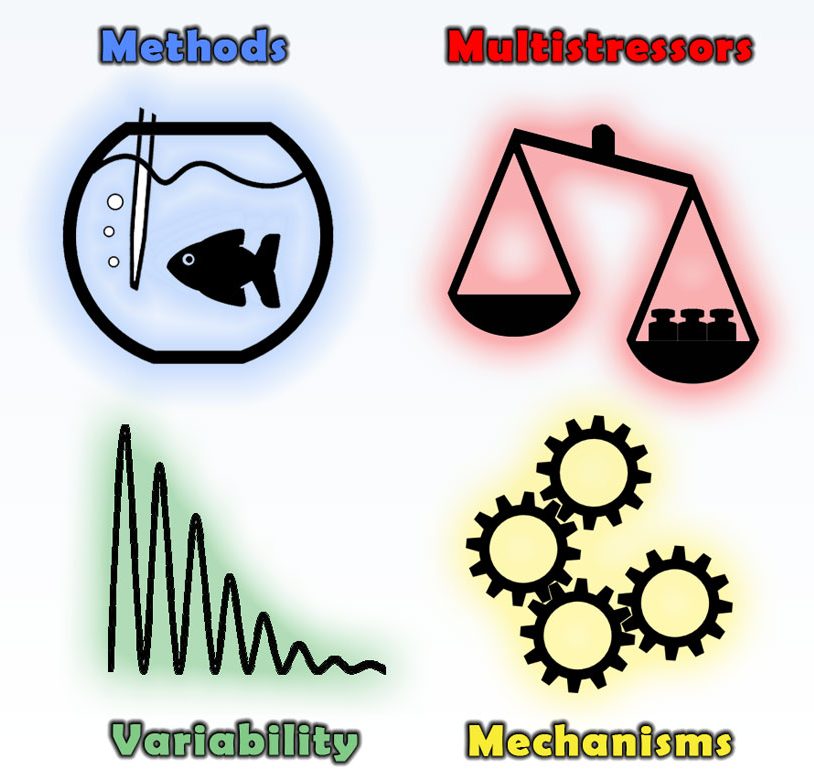
12. Friends of Marine Sciences - logo and outreach slide
11. Multistressor title art (L&O e-lectures)
10. Seasonal covariation of pH and dissolved oxygen in a temperate tidal salt marsh (aka "The turkeys")
Scientific graphs often get used for different purposes. In a publication (left side), the focus is on clarity, simplicity, and the use of colors is often constrained. But when the same data are used in a presentation, for example at a conference, the graphs are best reworked and adapted so that they capture the audience attention. Here, the use of the background sets the stage for the particular habitat the study is talking about, whereas the graphs are combined, colored and annotated. In a presentation, nobody can read a figure caption!
9. Mumford Cove biweekly beach seine survey and environmental monitoring (2015-2018)

8. CO2 sensitivity of fish embryos and larvae from different mothers (aka "The dancing men")
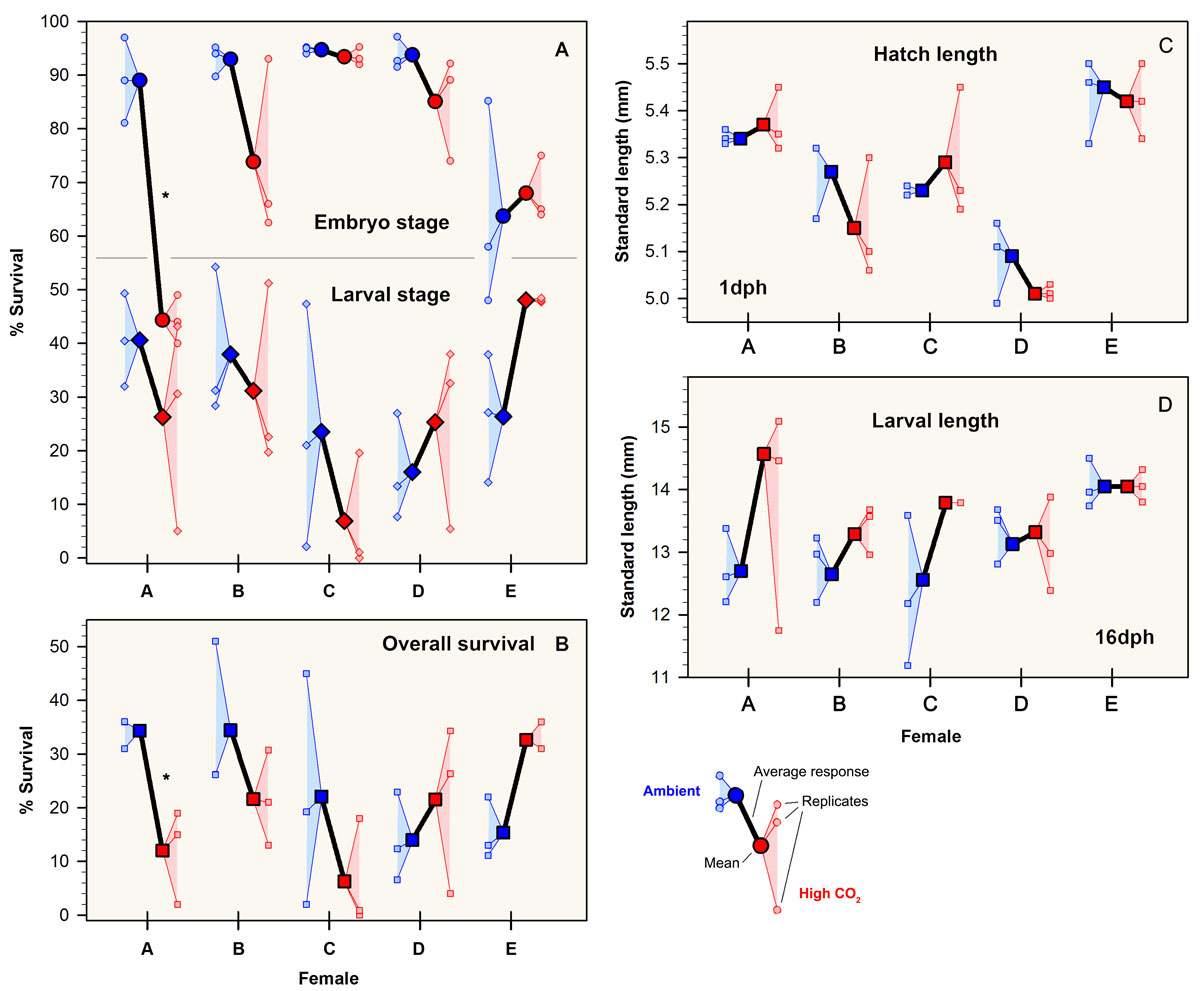
7. Depicting interannual trends in temperature, pH, and dissolved oxygen in 16 nearshore estuaries
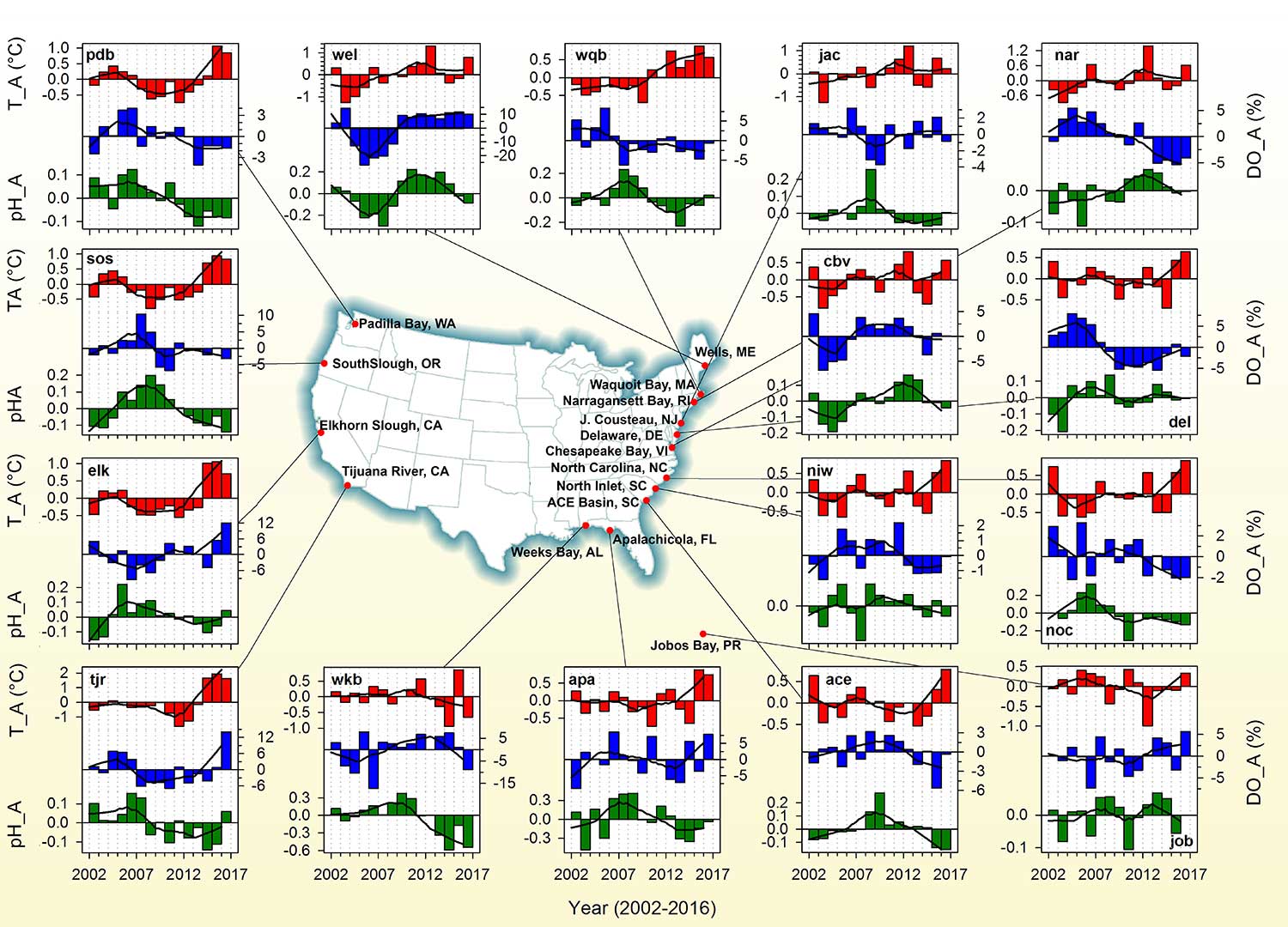
6. Graphical recording of Hannes' talk at Columbia University by Tracey Berglund
5. Outreach material for the Mumford Cove Association
4. Climate change effects on zooplankton and its potential for mismatches with higher trophic levels - a genesis
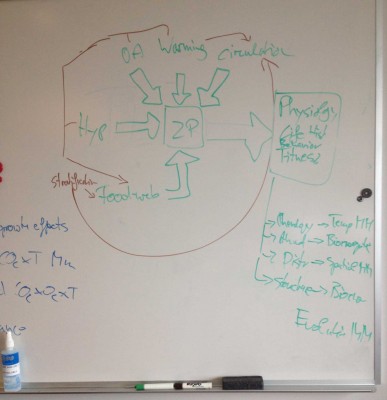
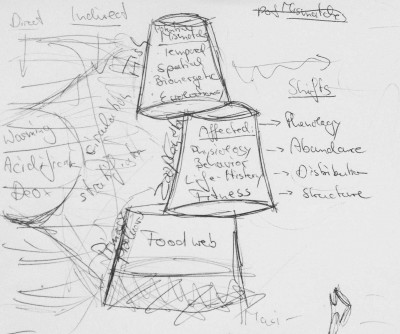
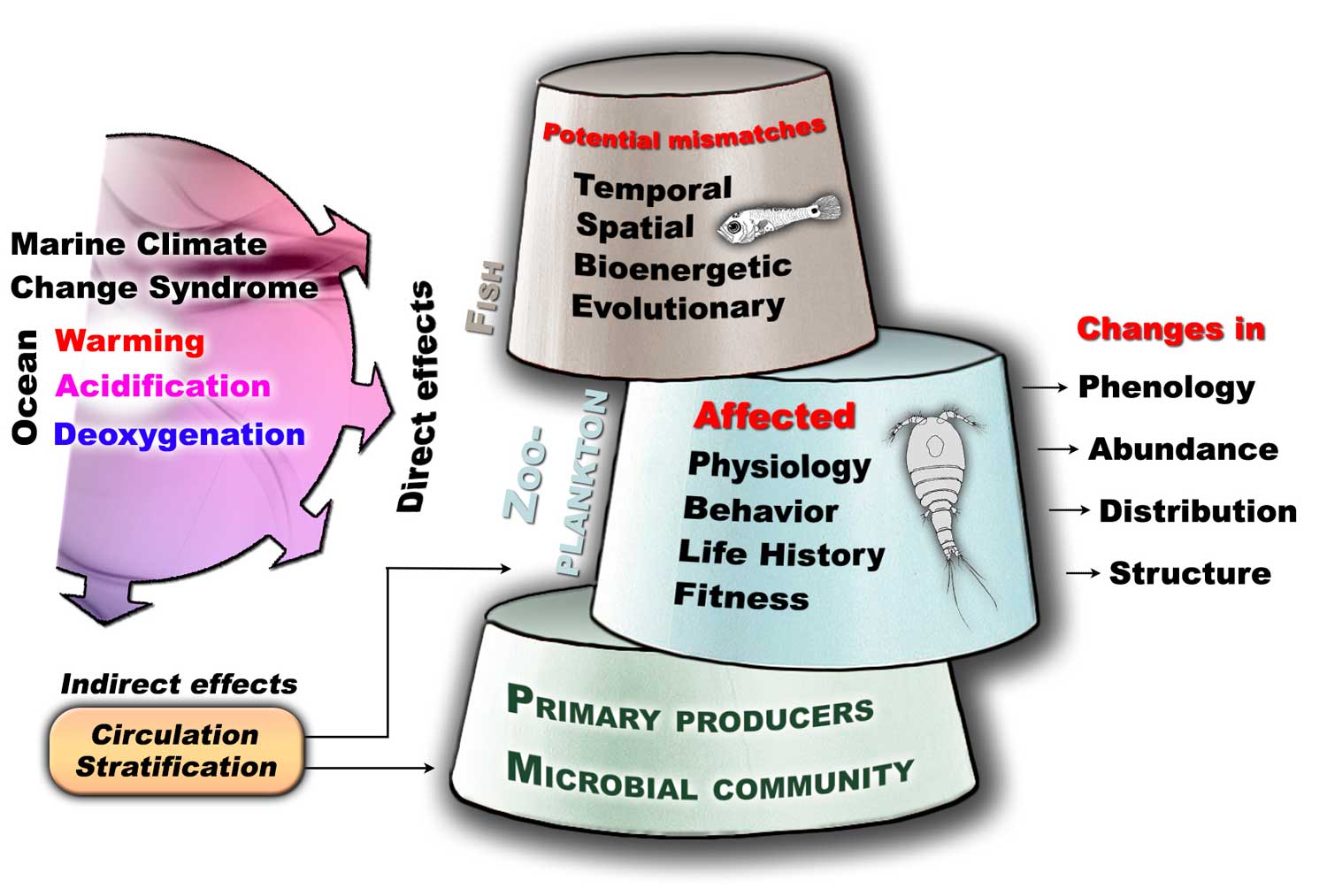
3. Illustration of the structure of a research proposal
2. Ocean acidification: challenges on each level of organization - a genesis

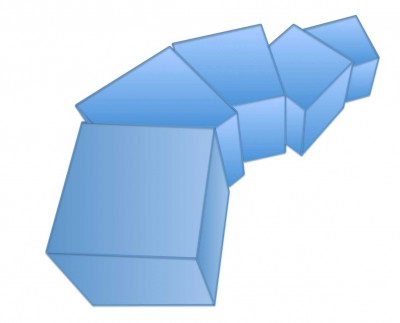
The idea of using cubes to visualize the hierarchical levels of organization came while contemplating the mess in my kids' room, in particular the alphabet cubes strewn on the floor ..."
